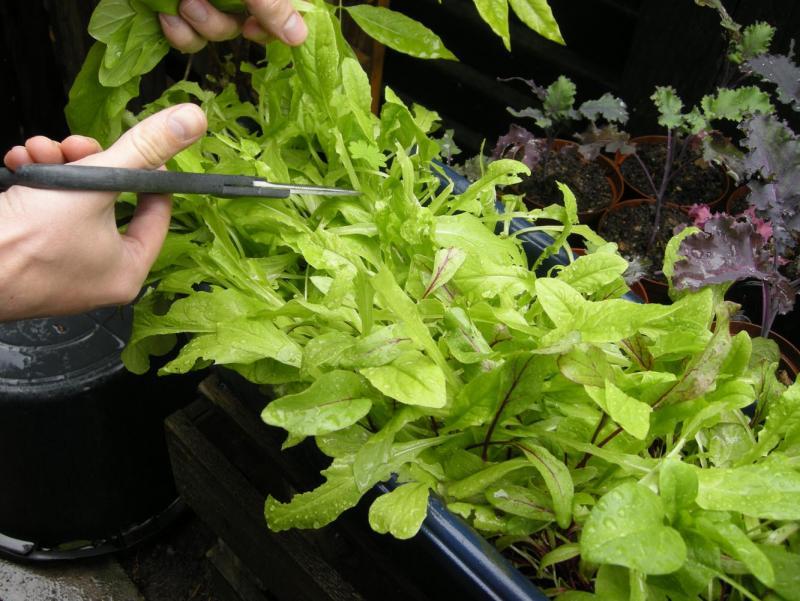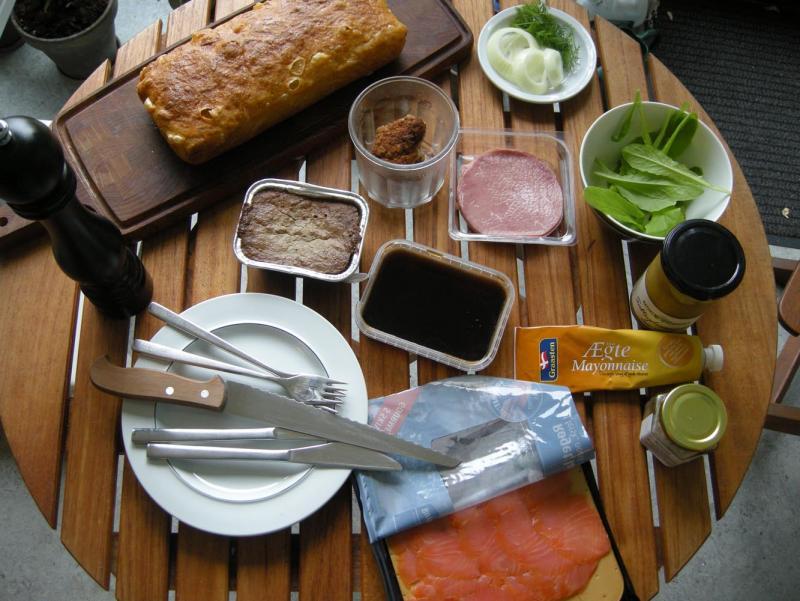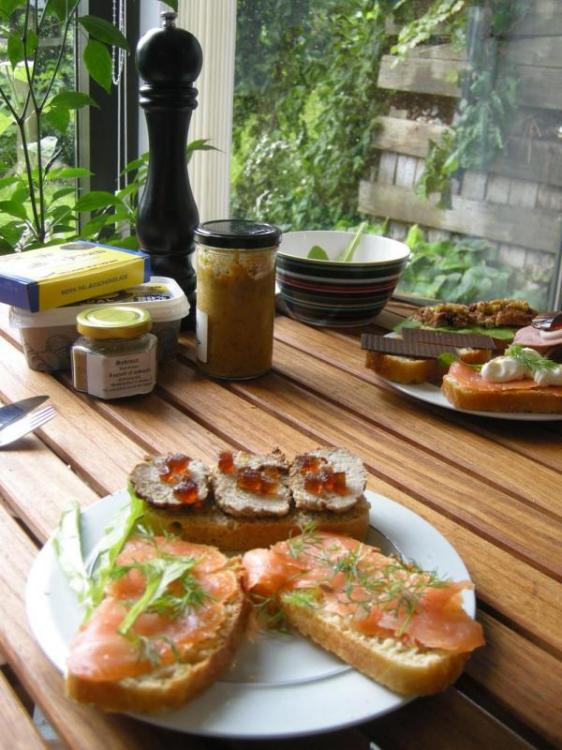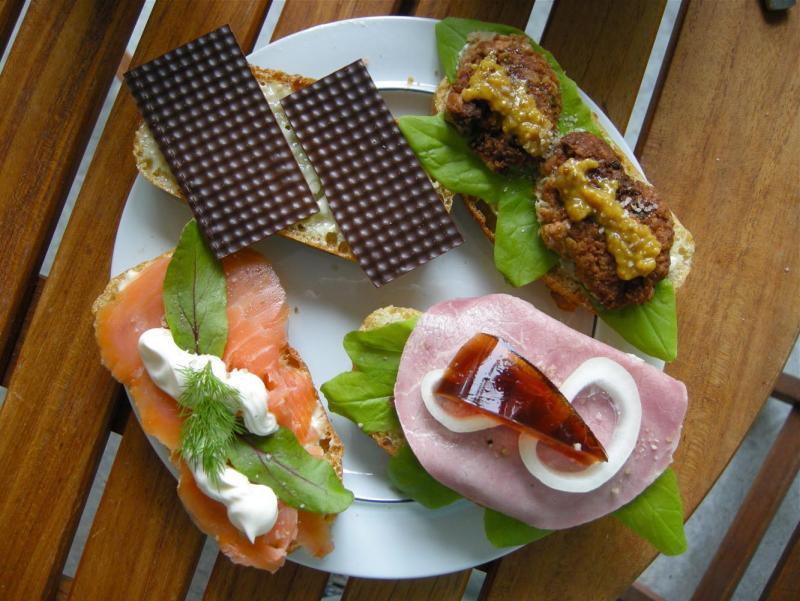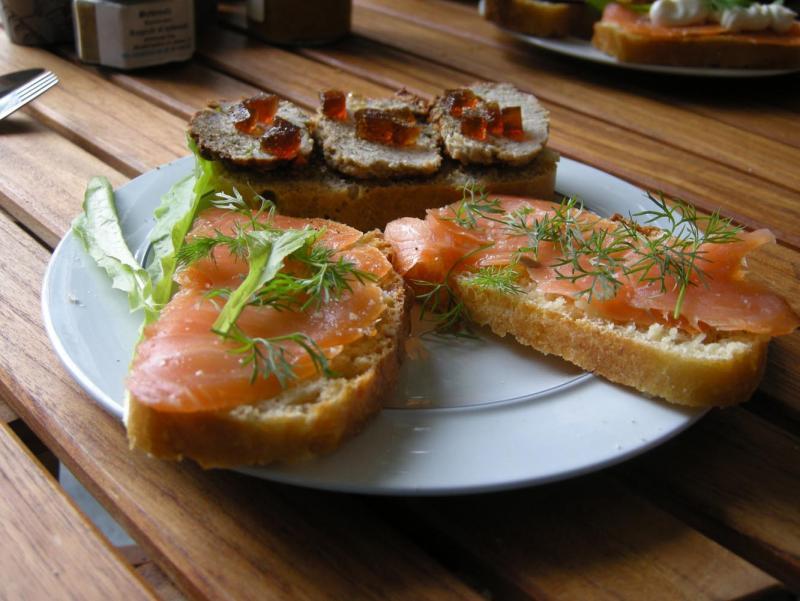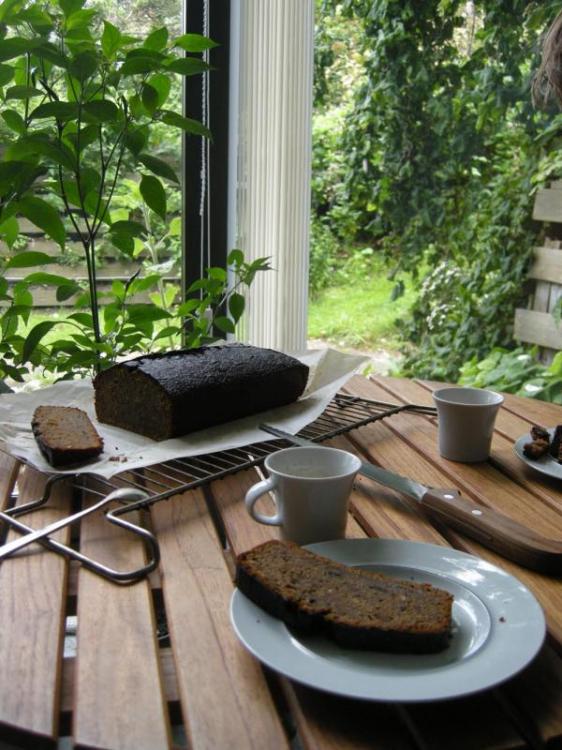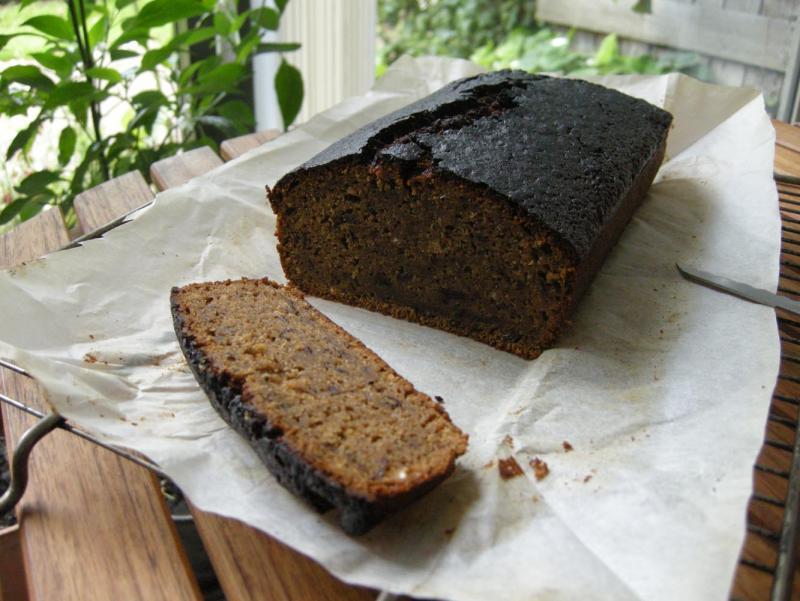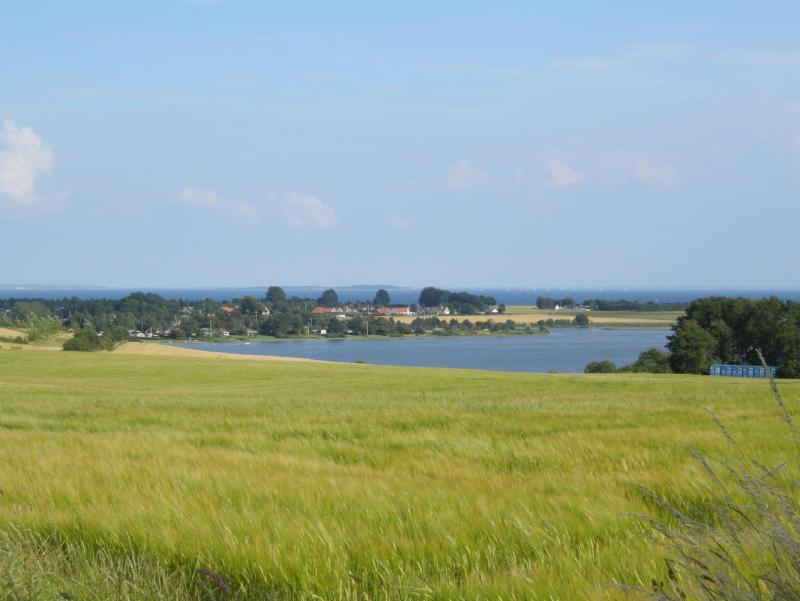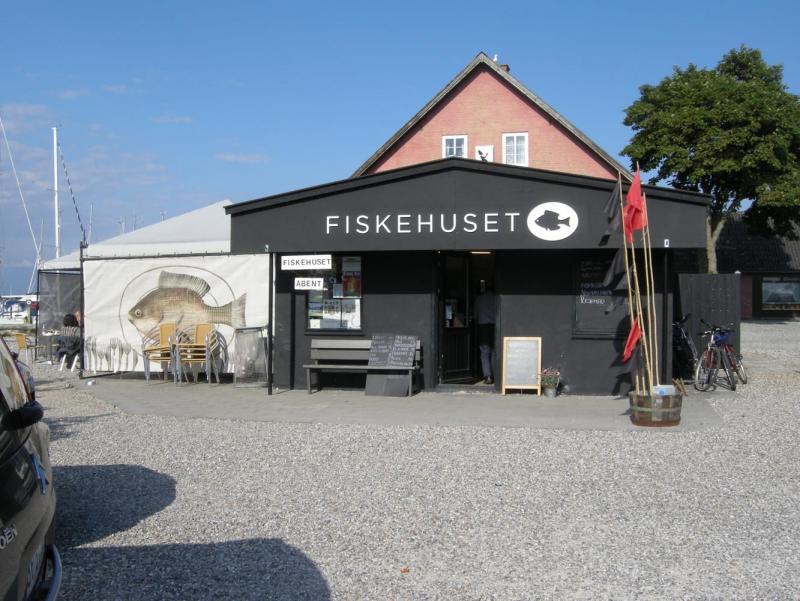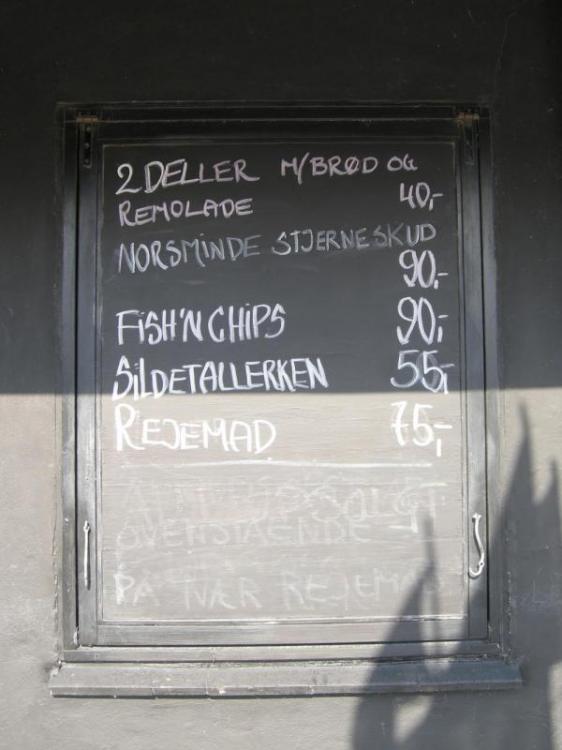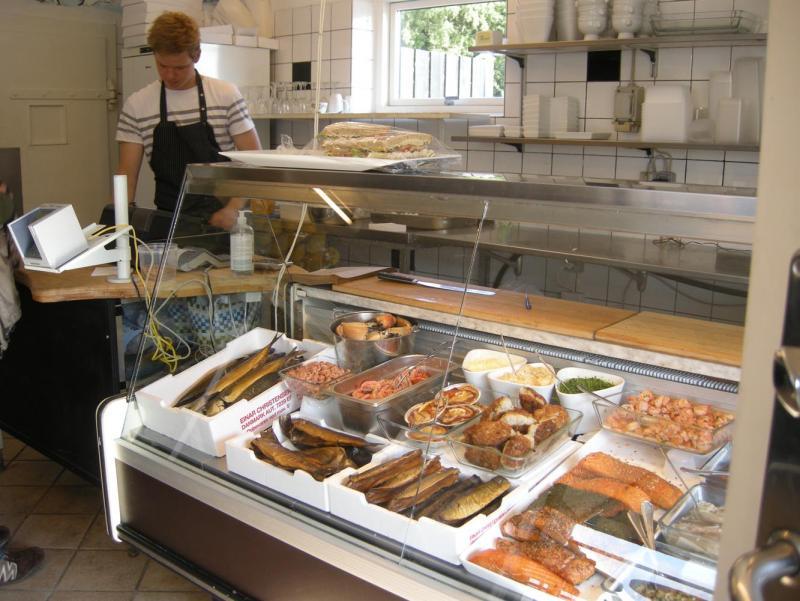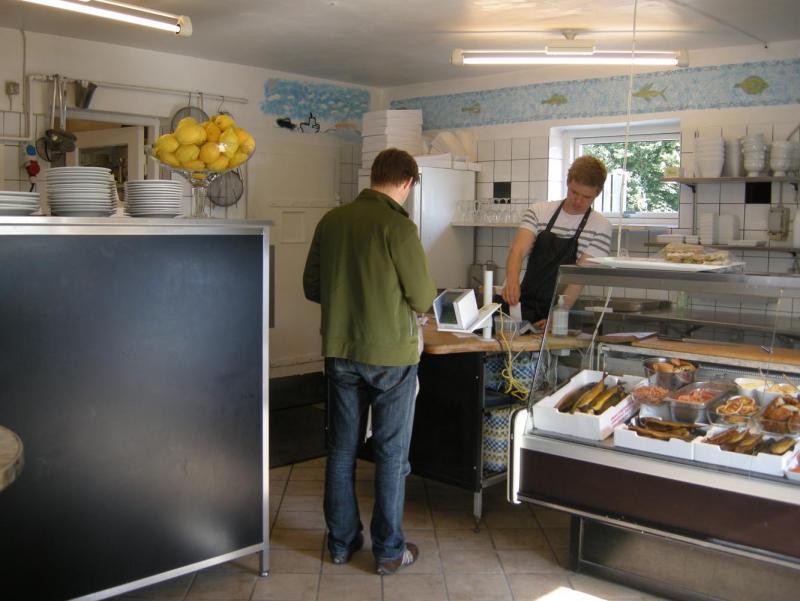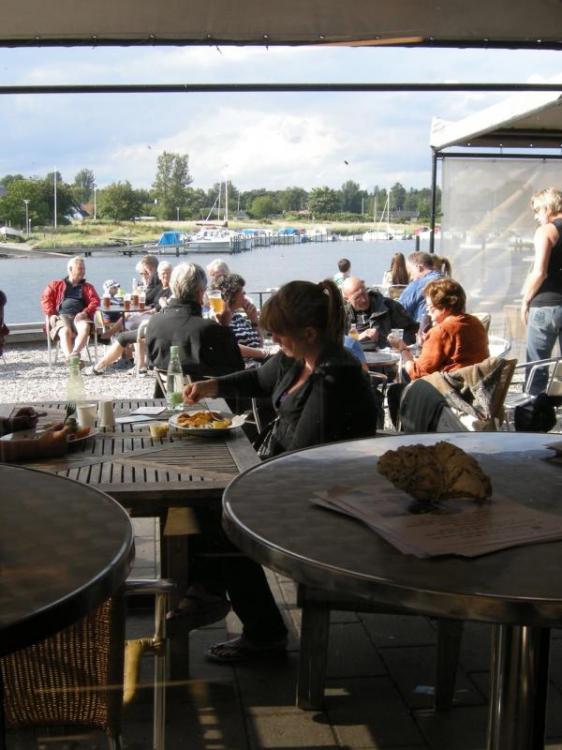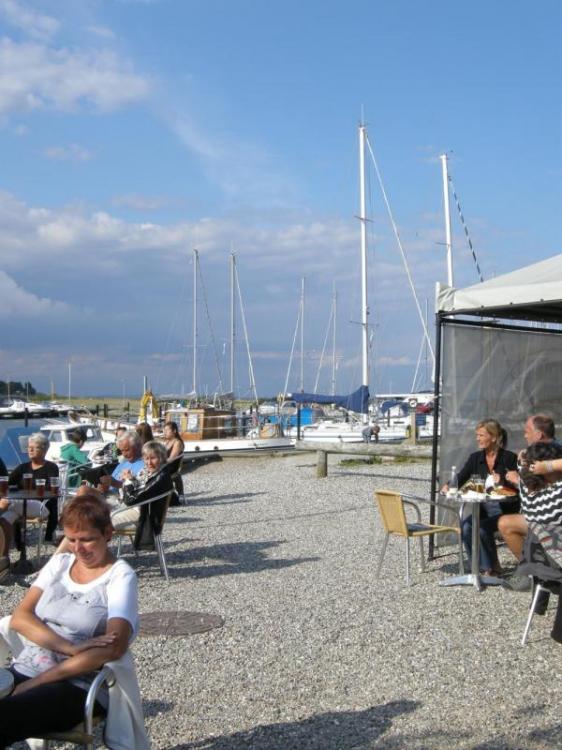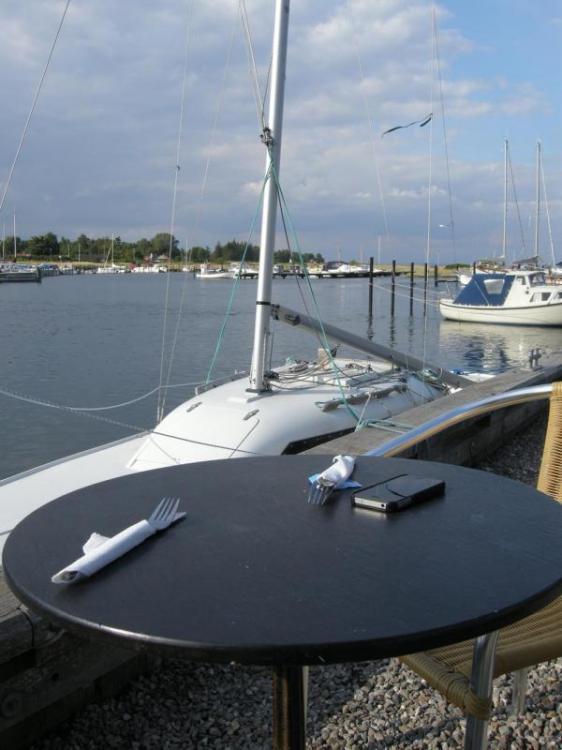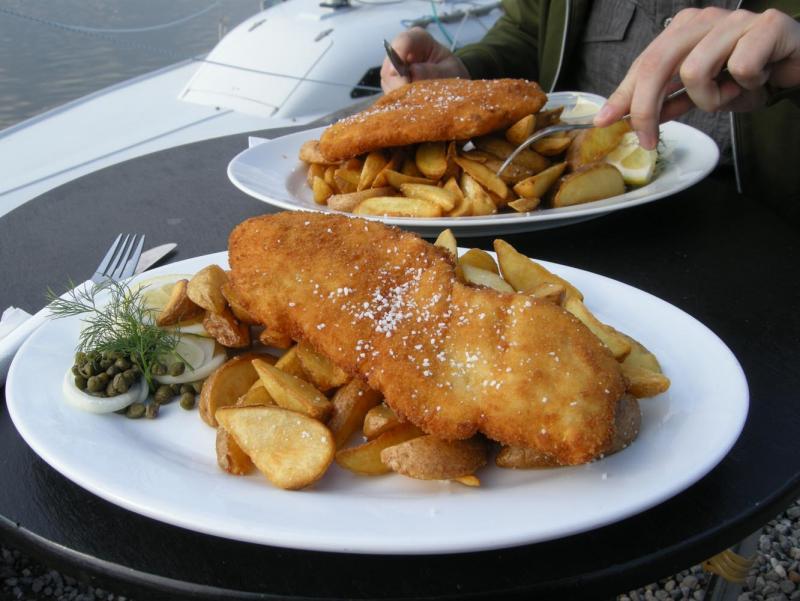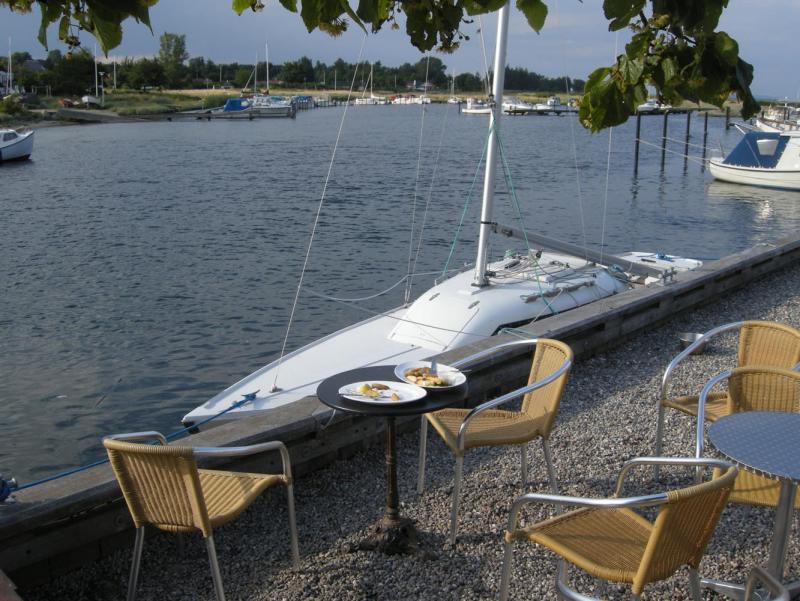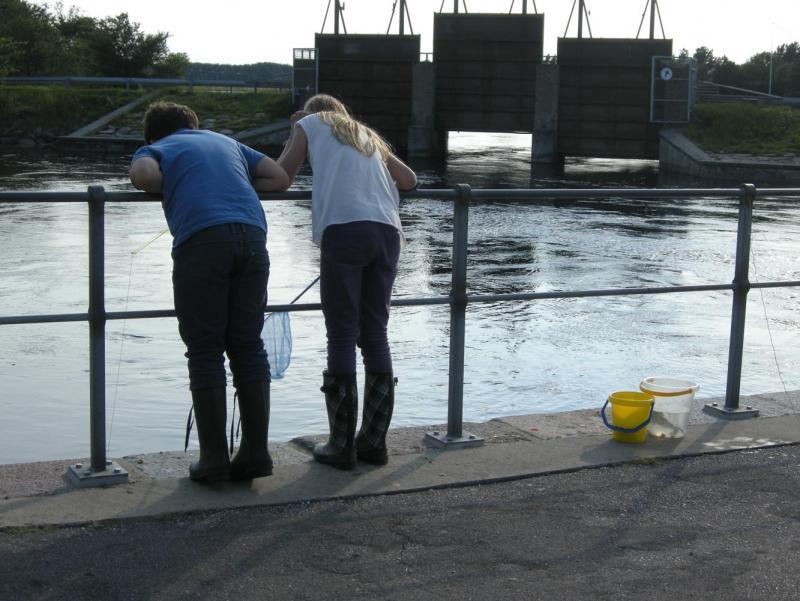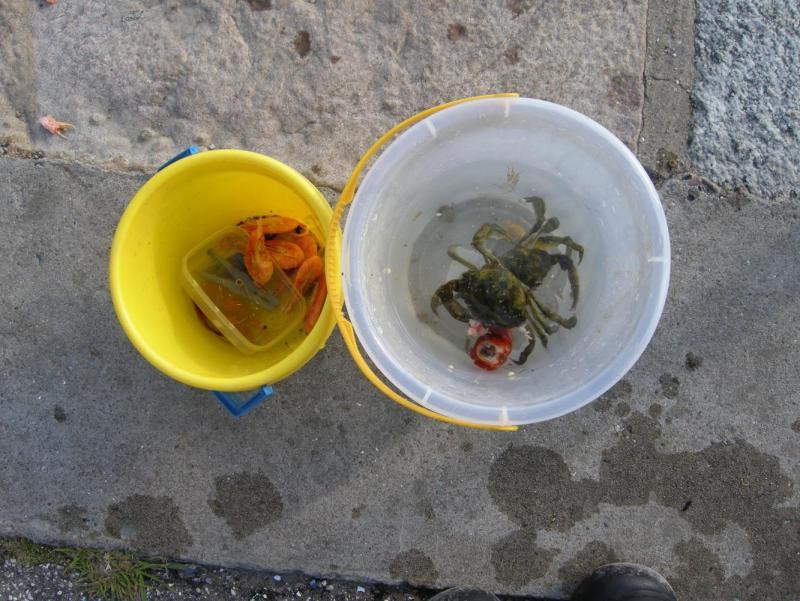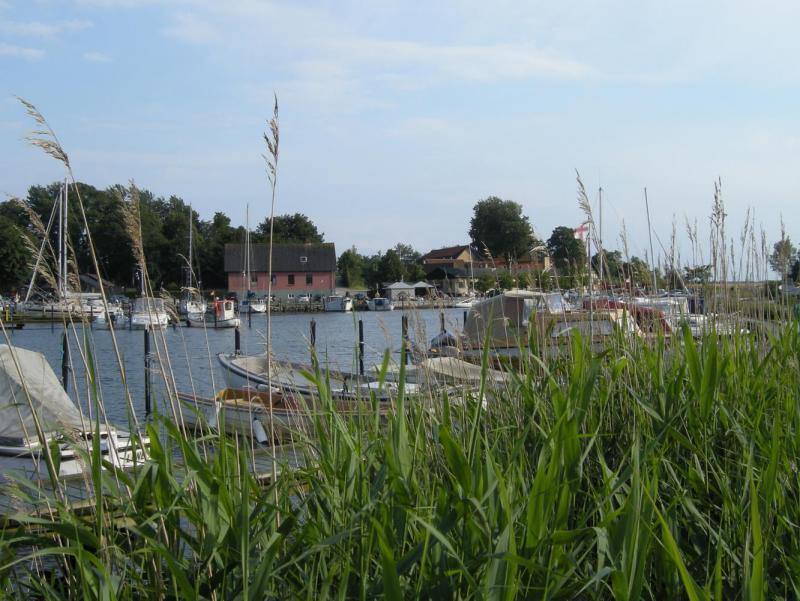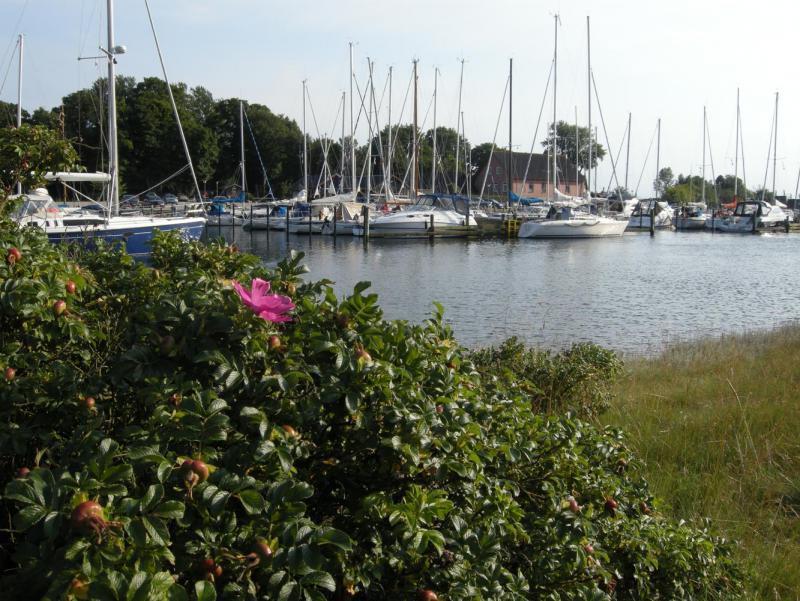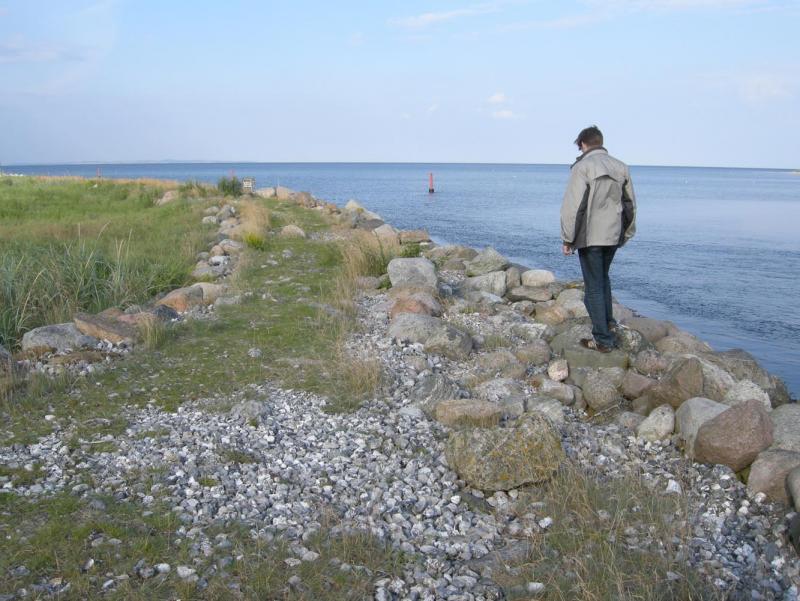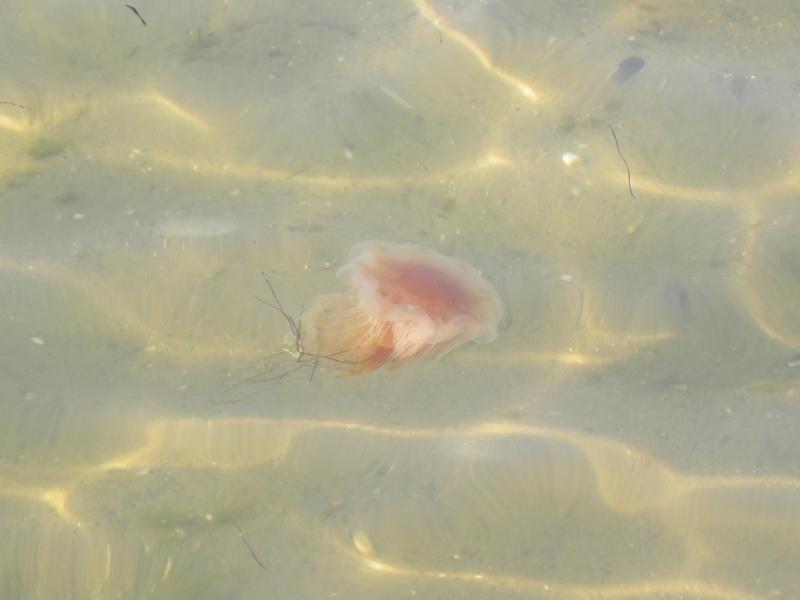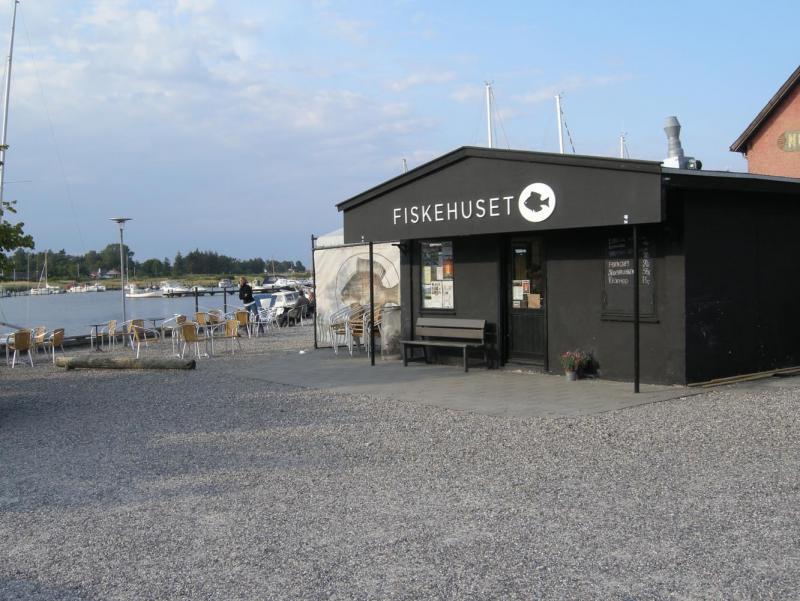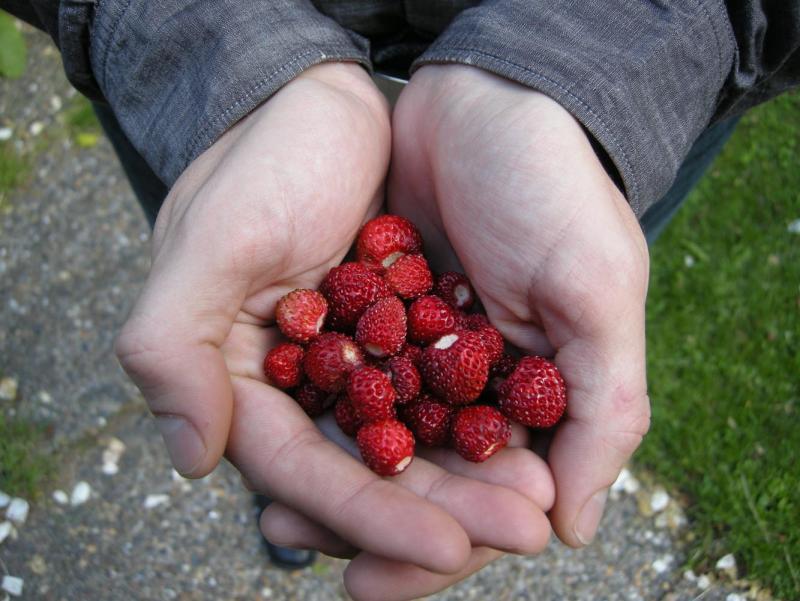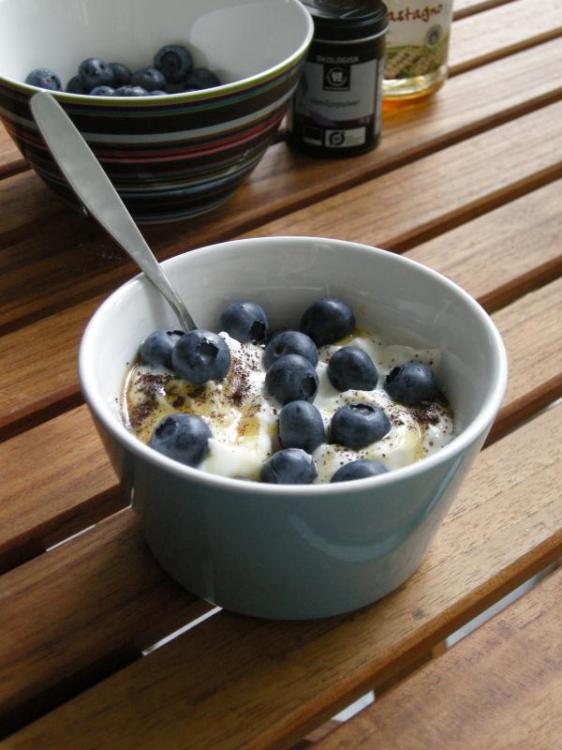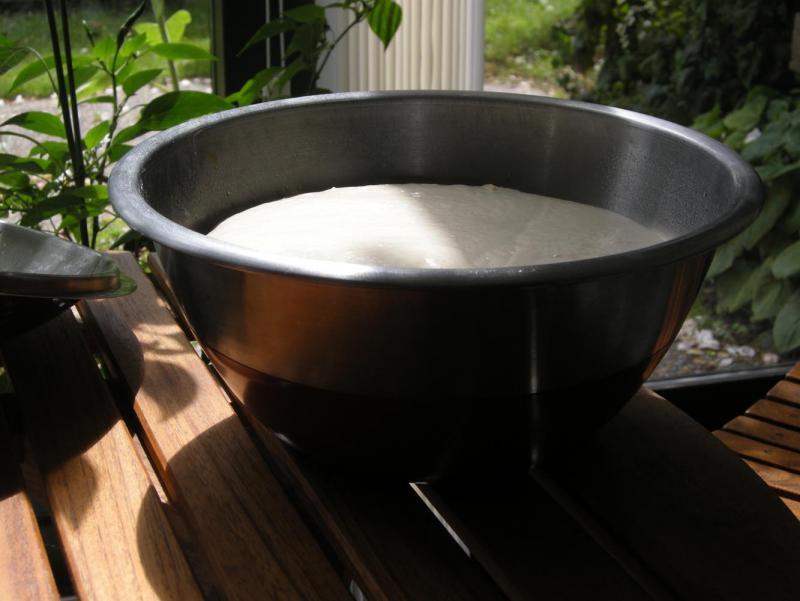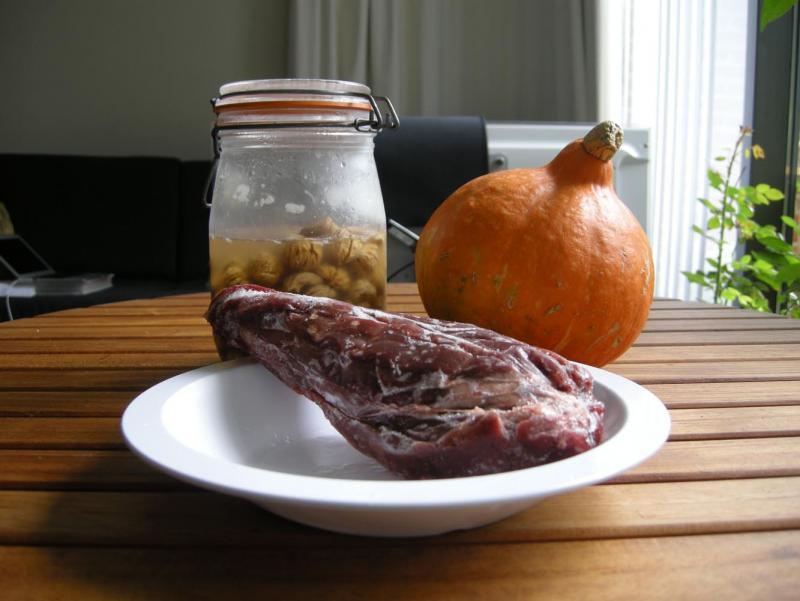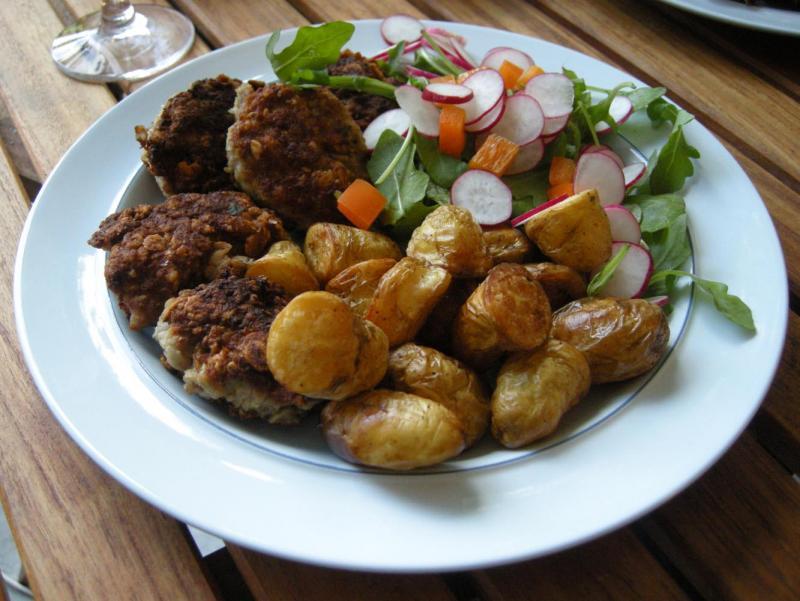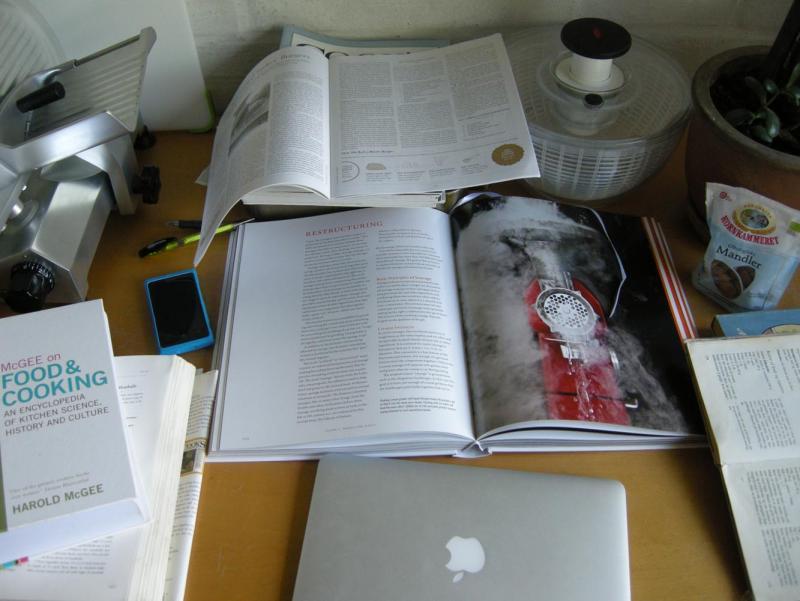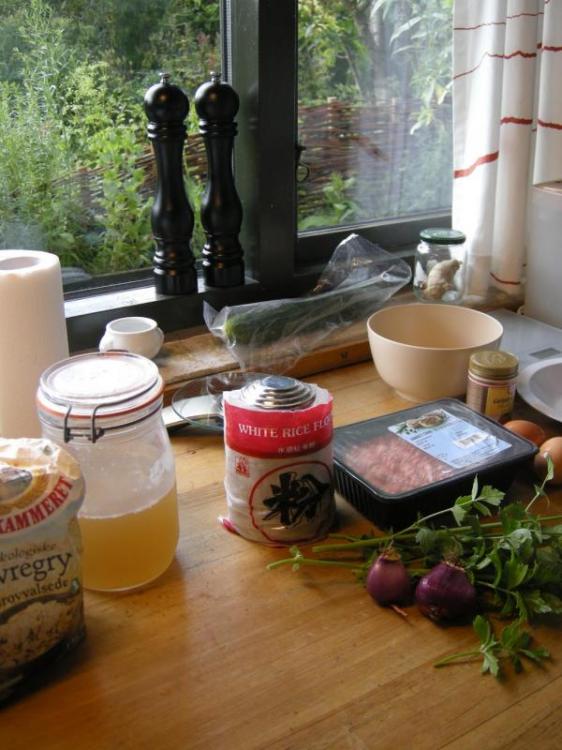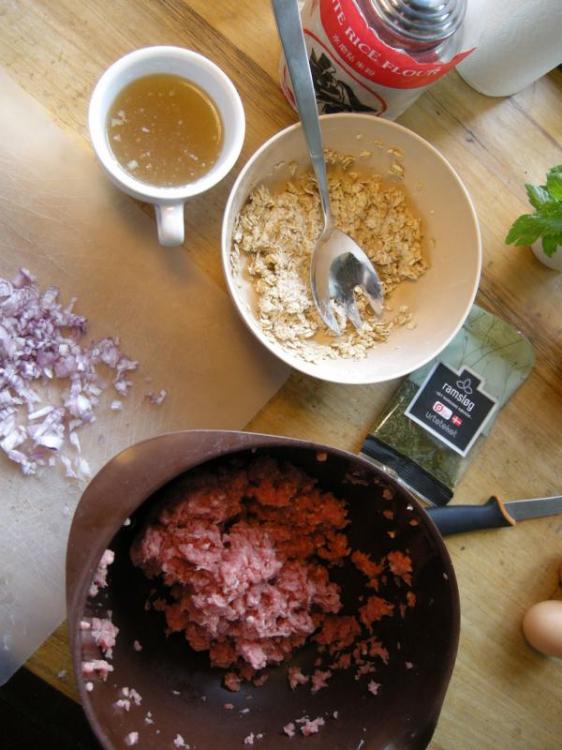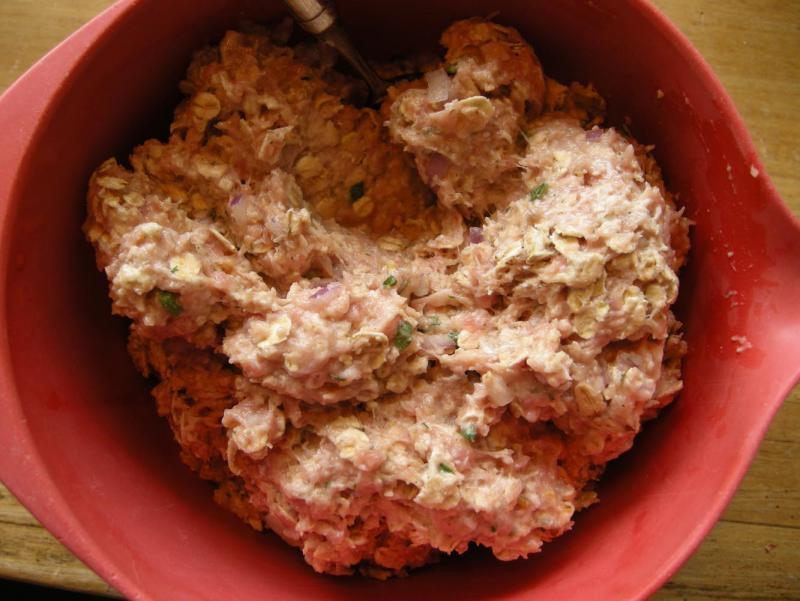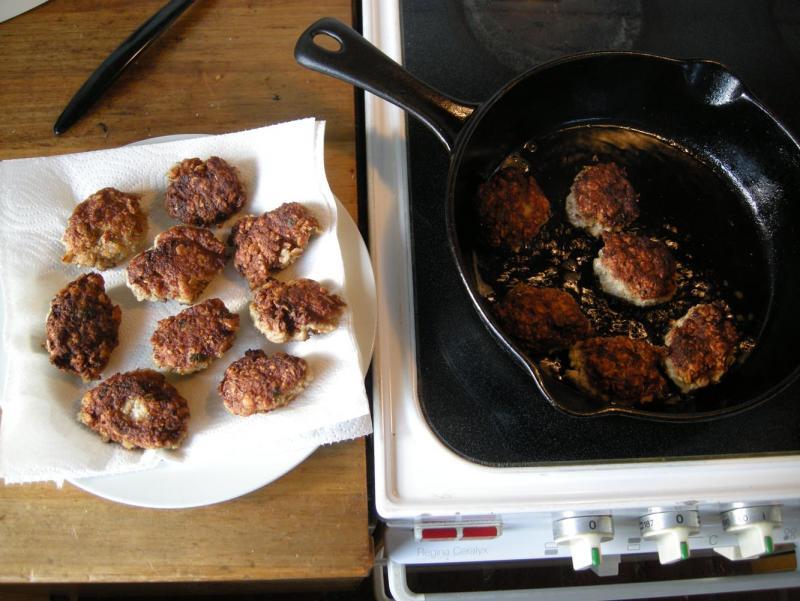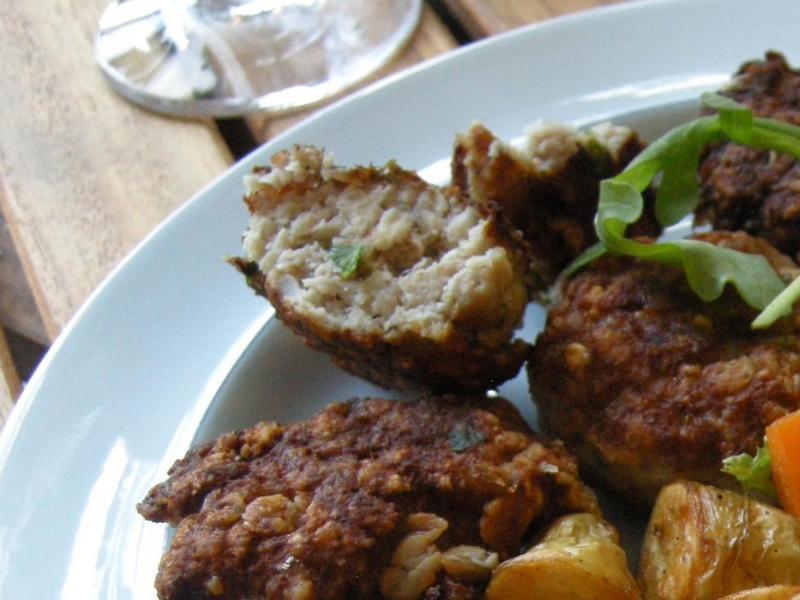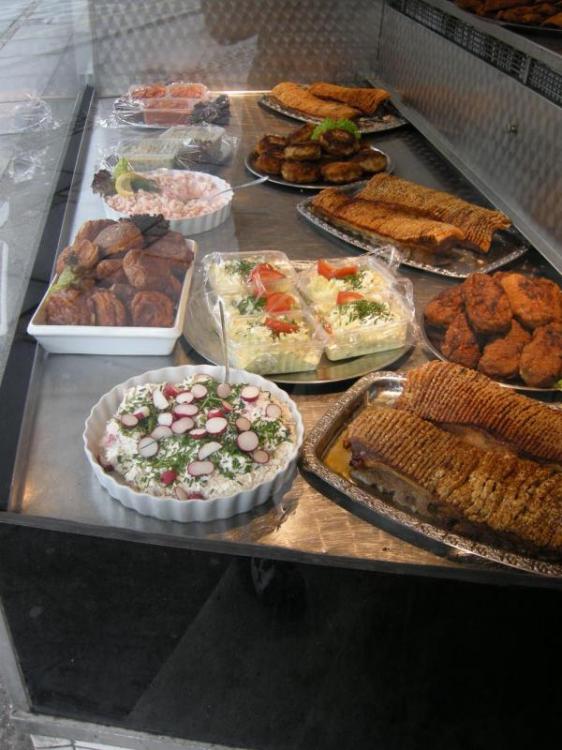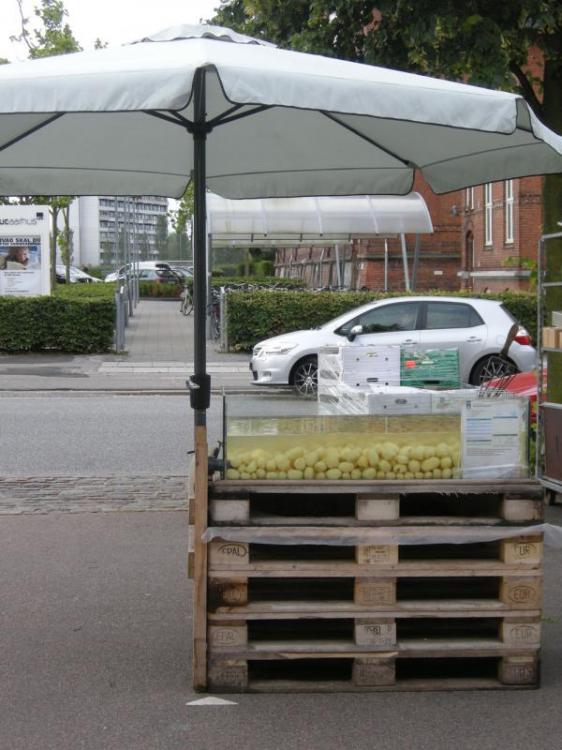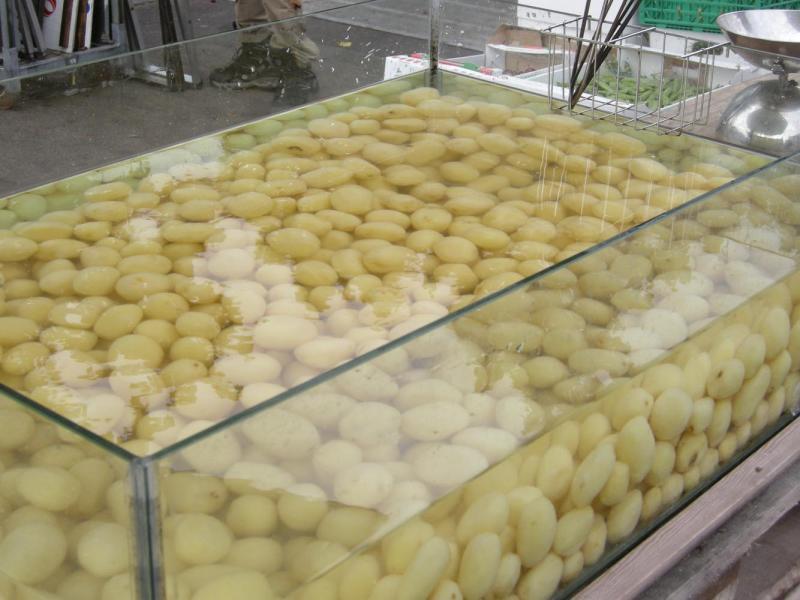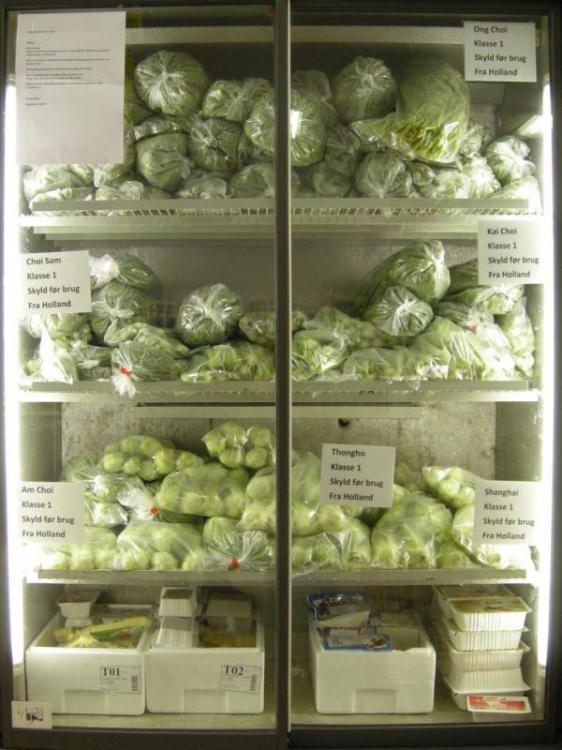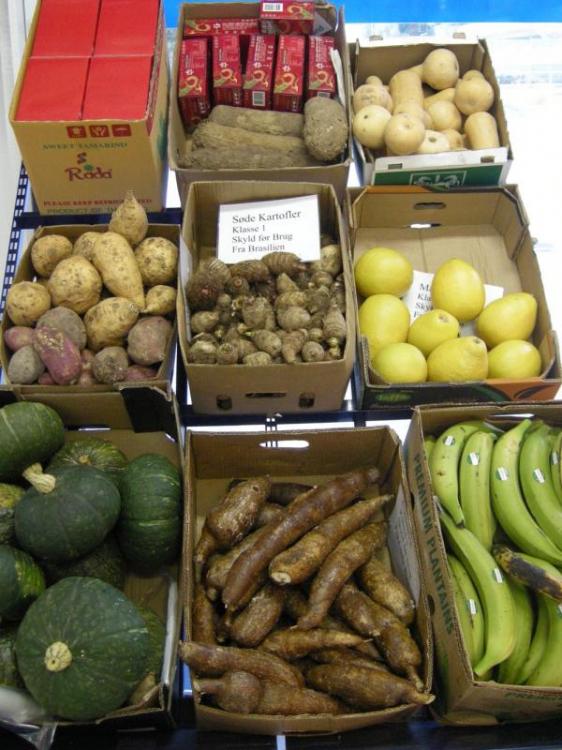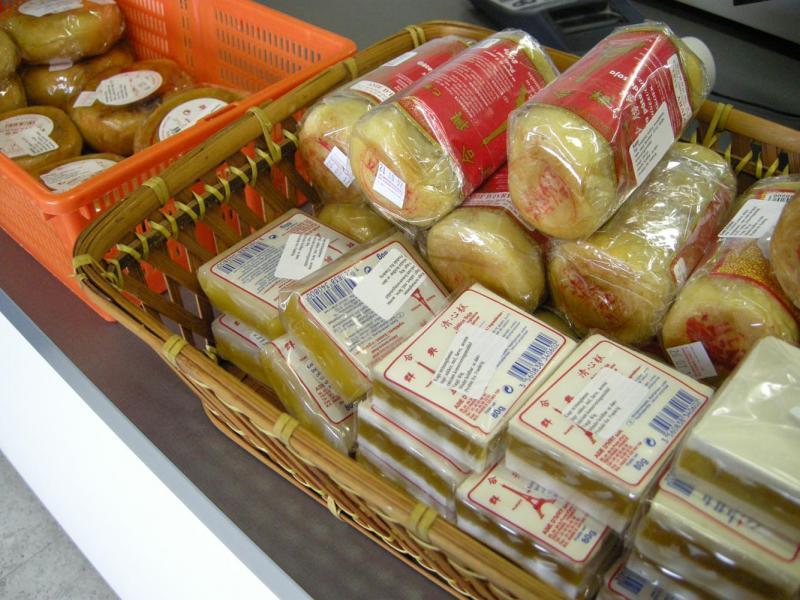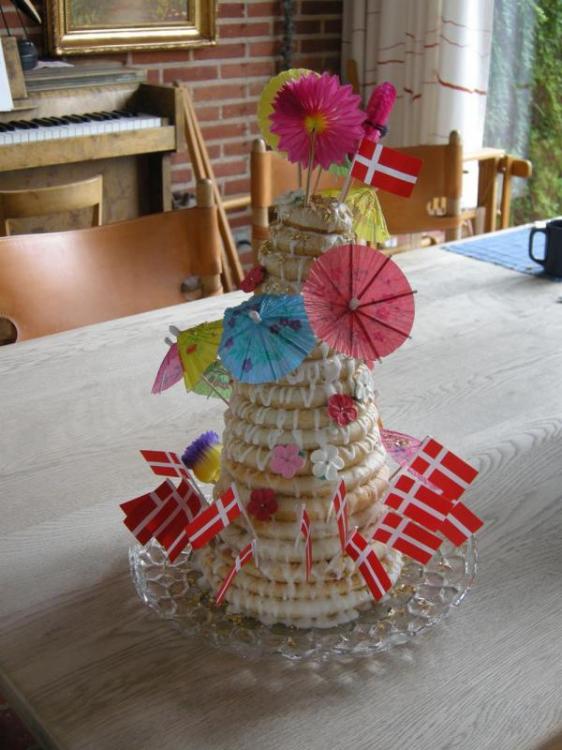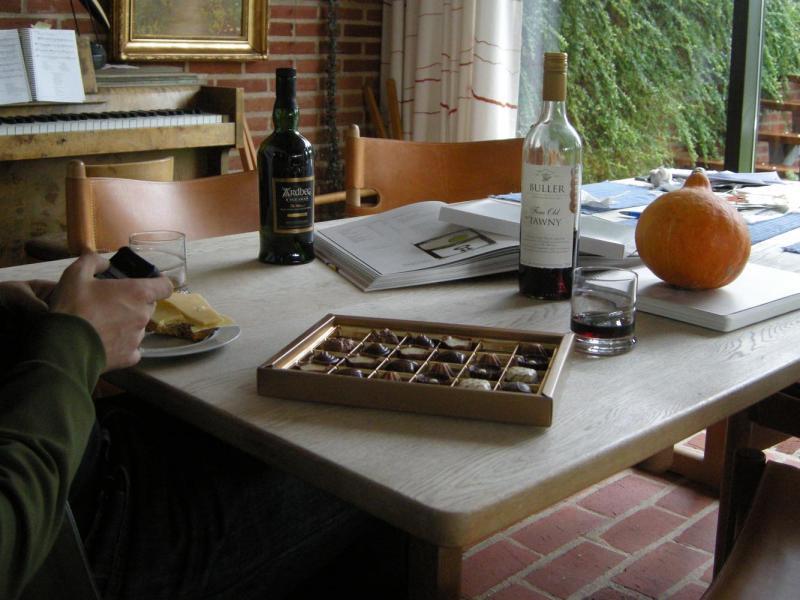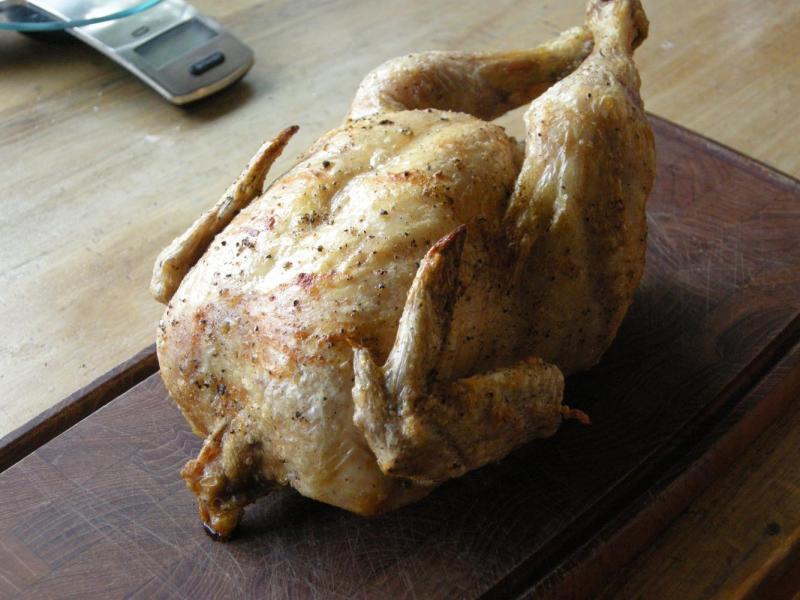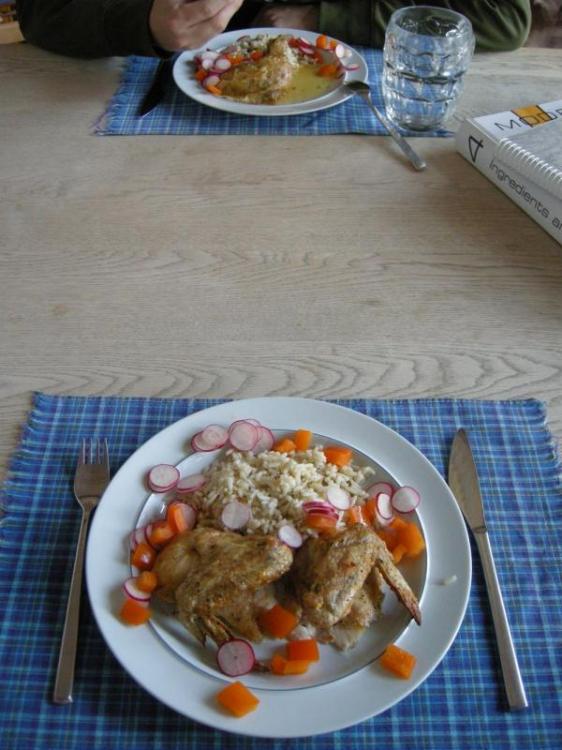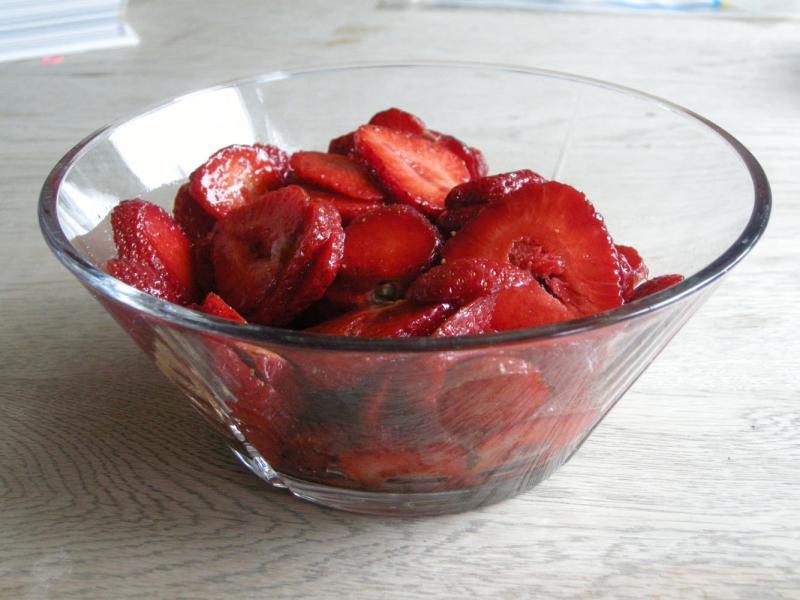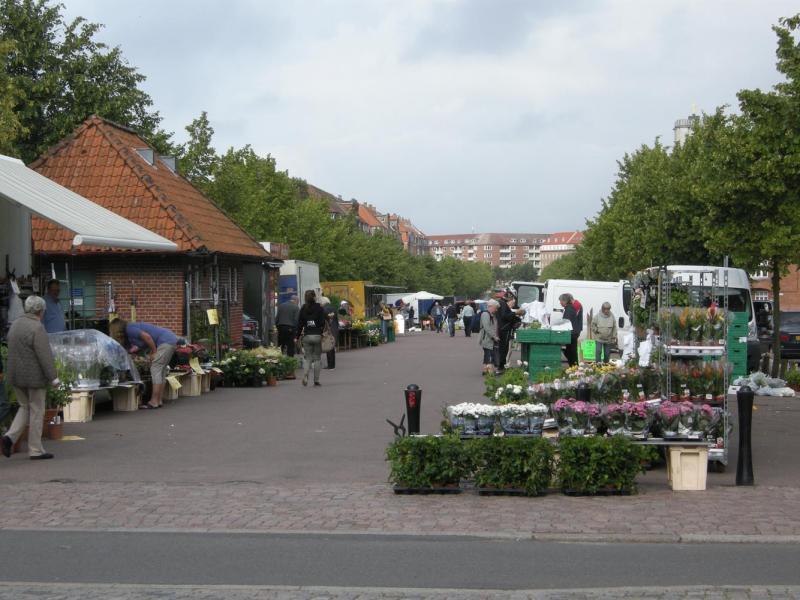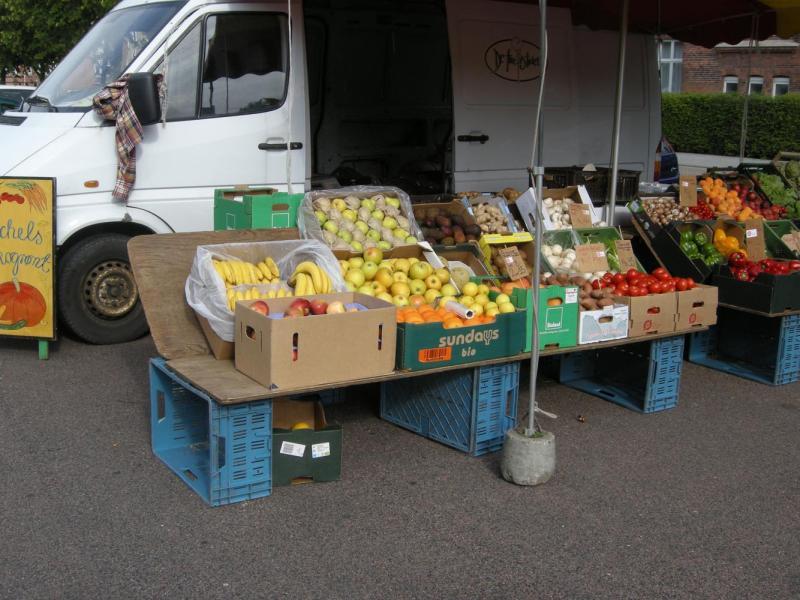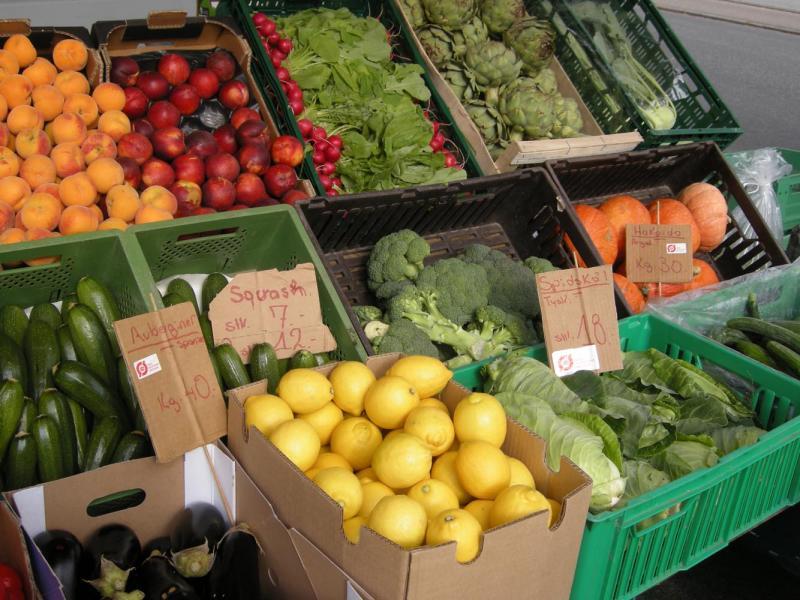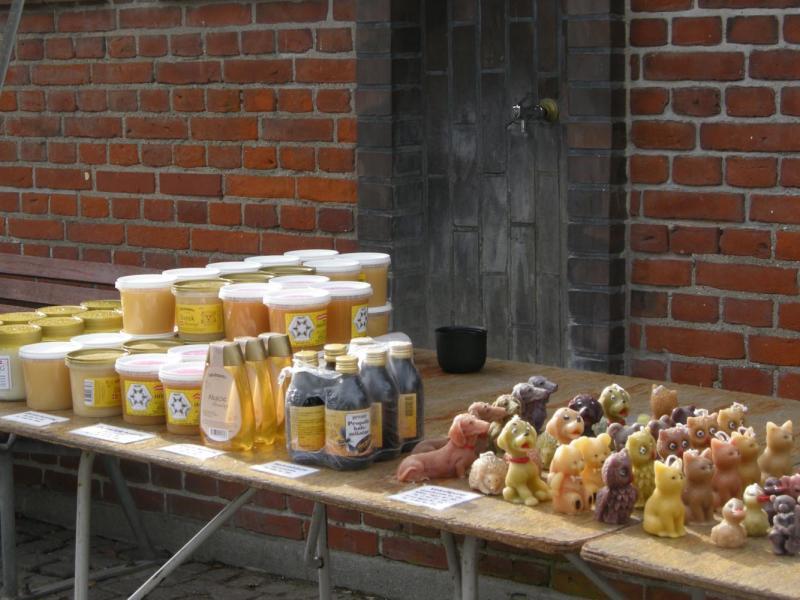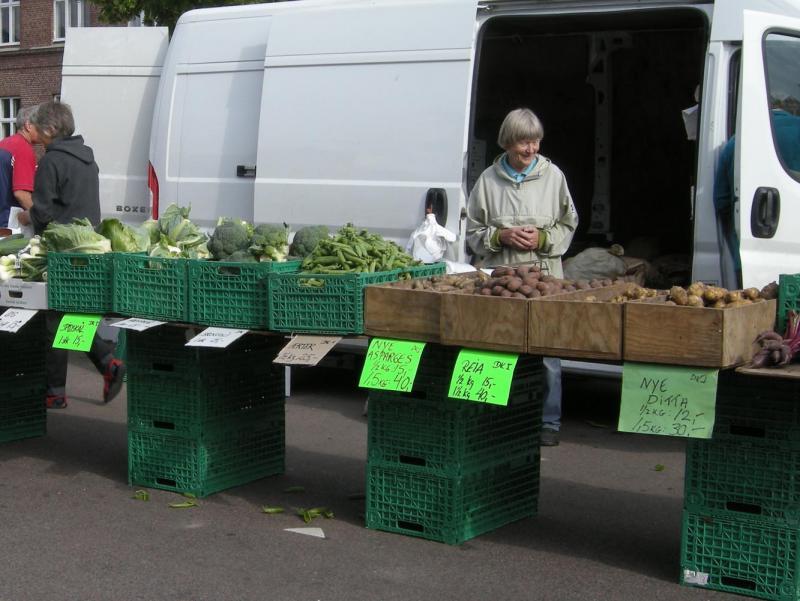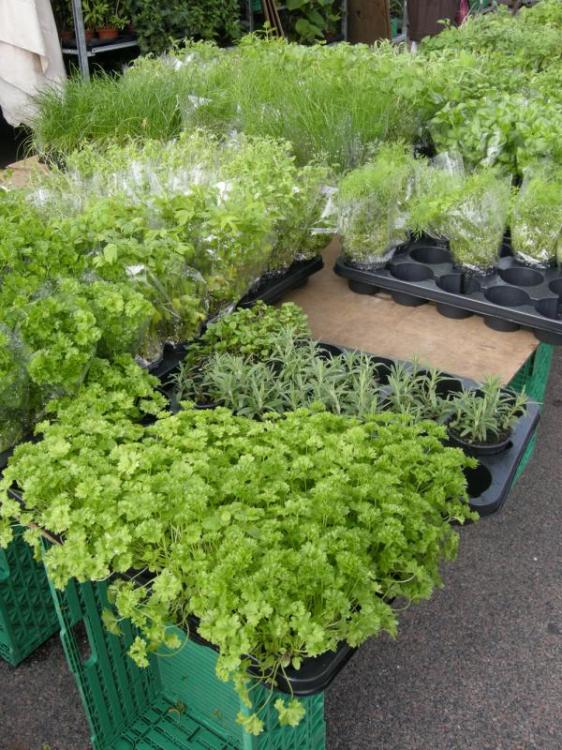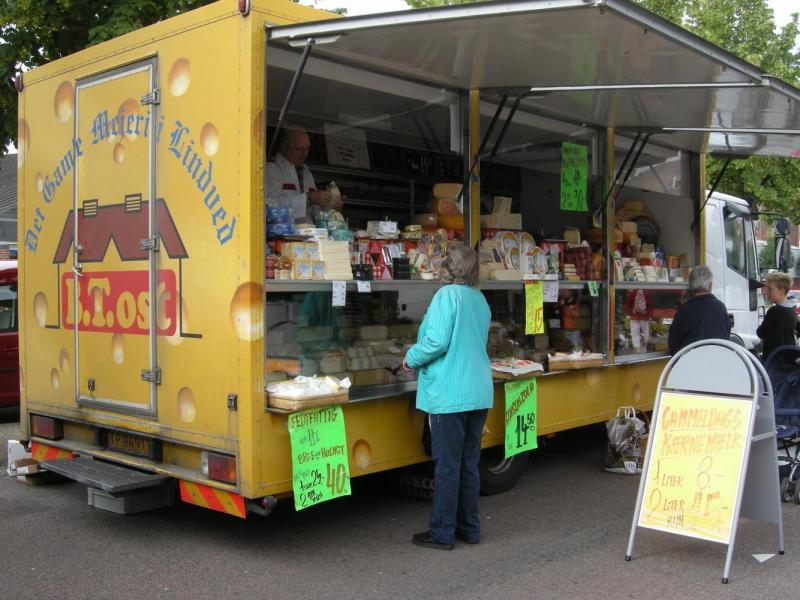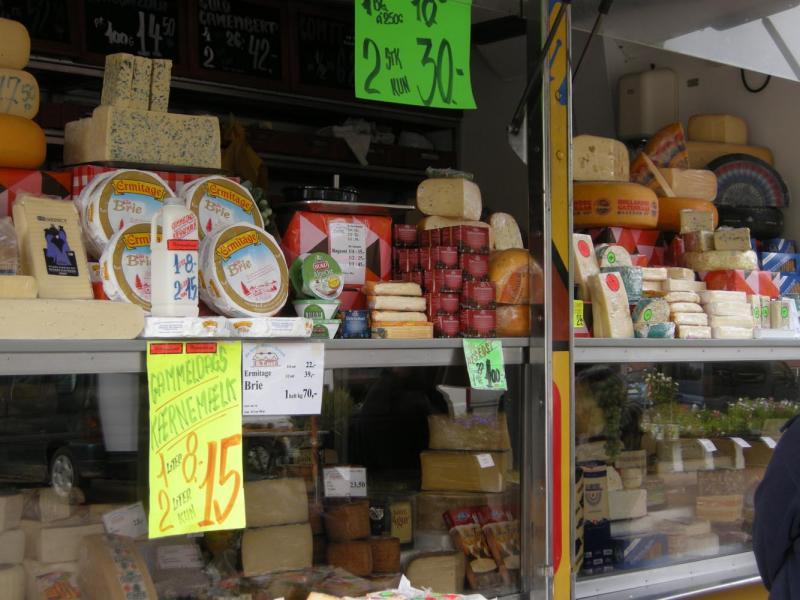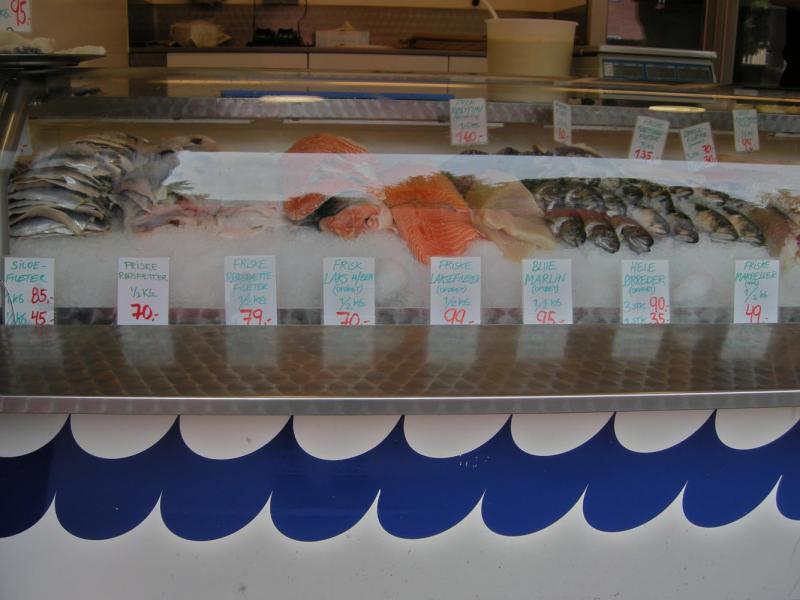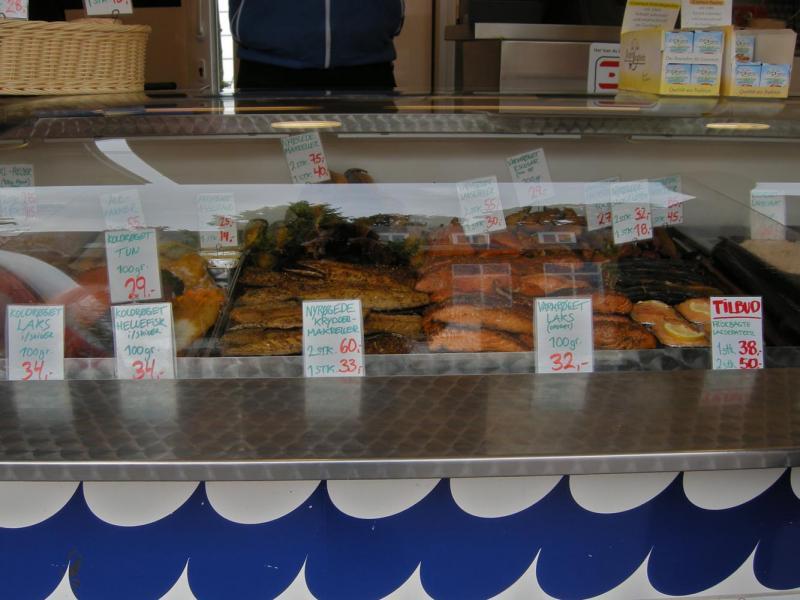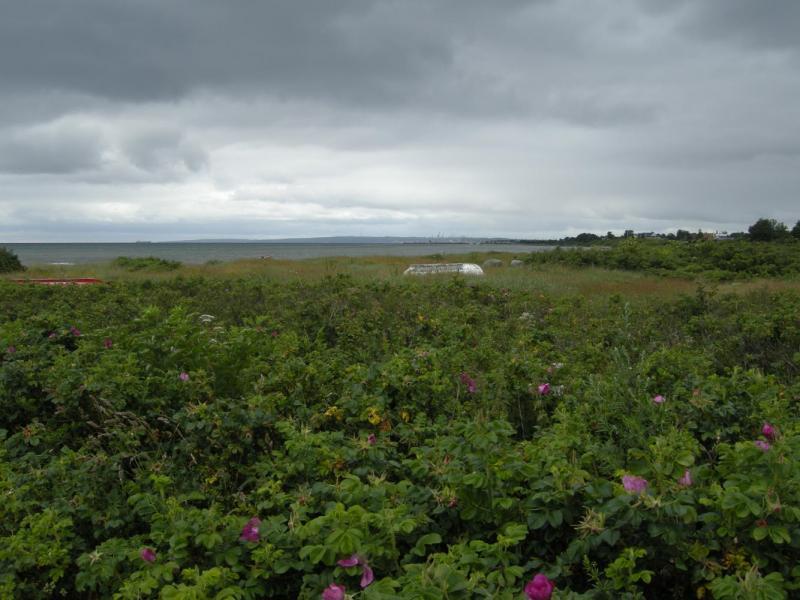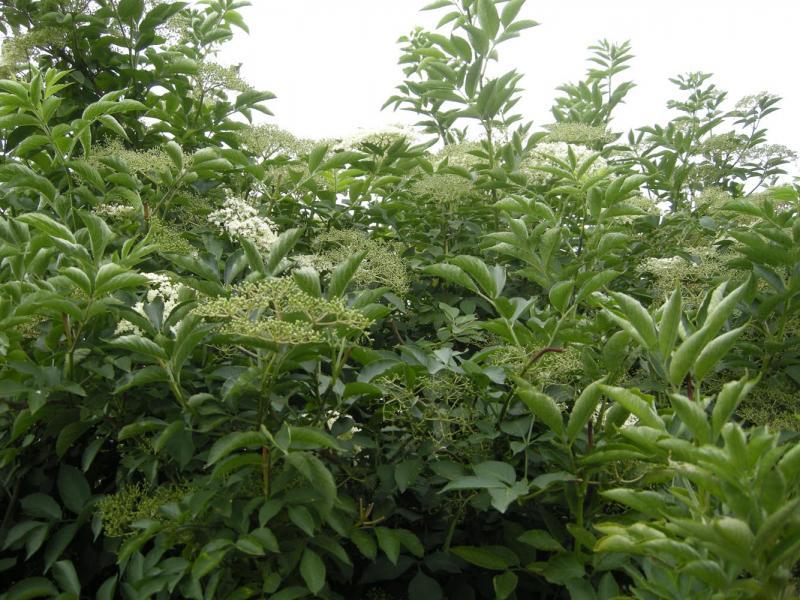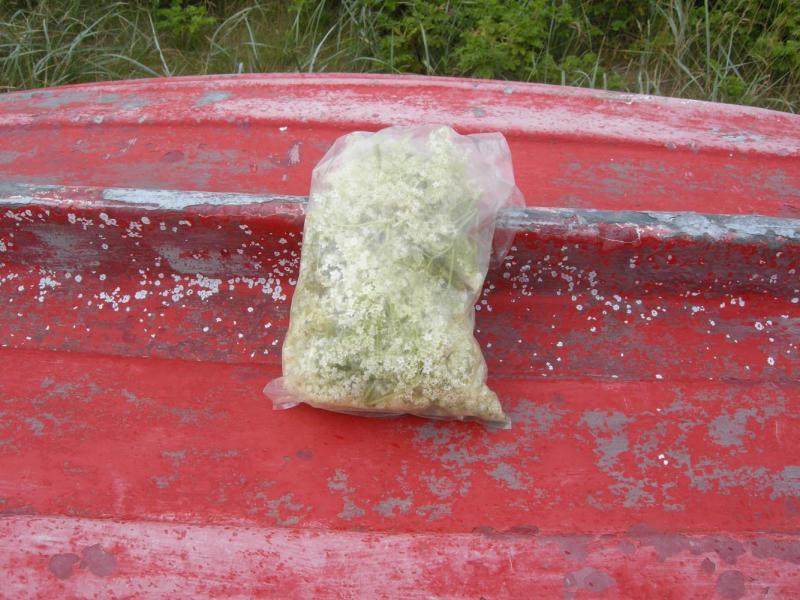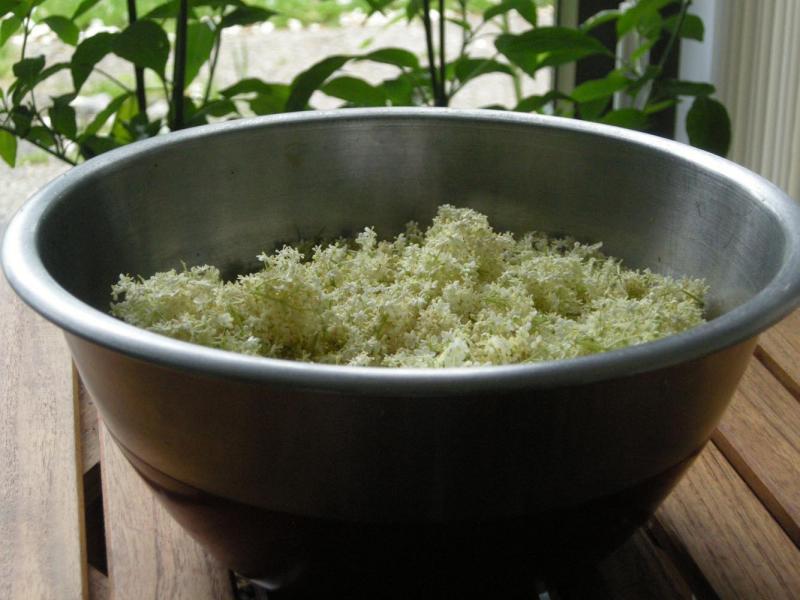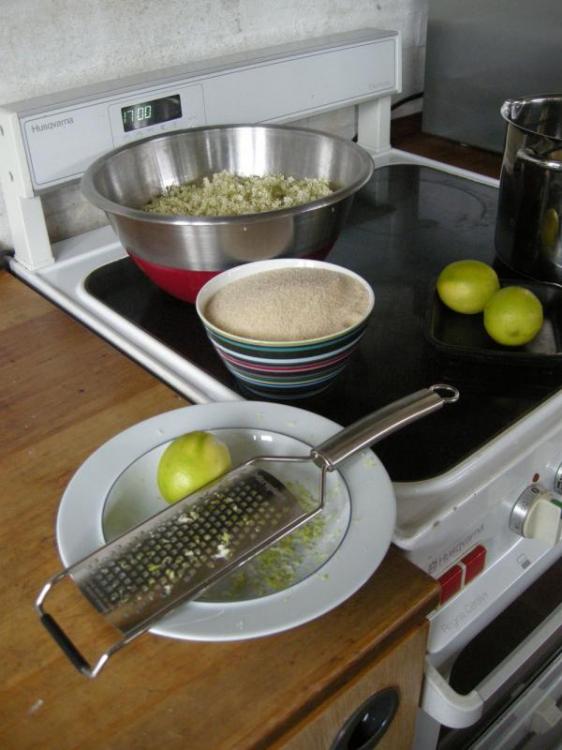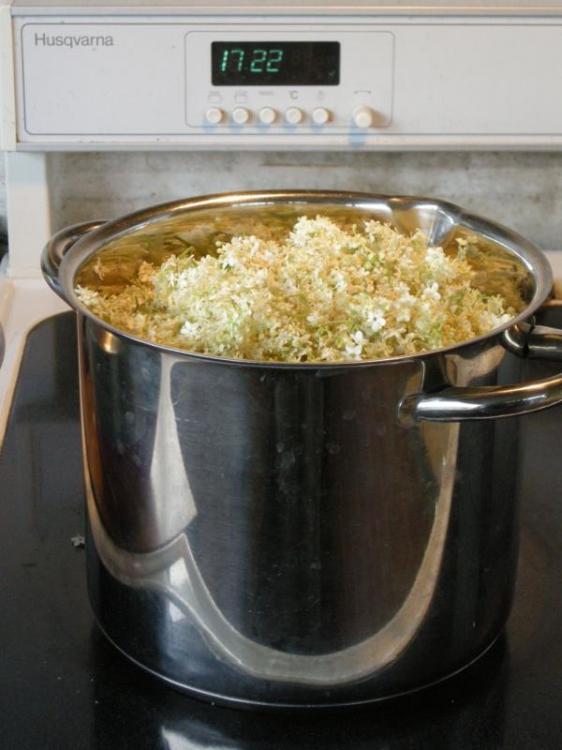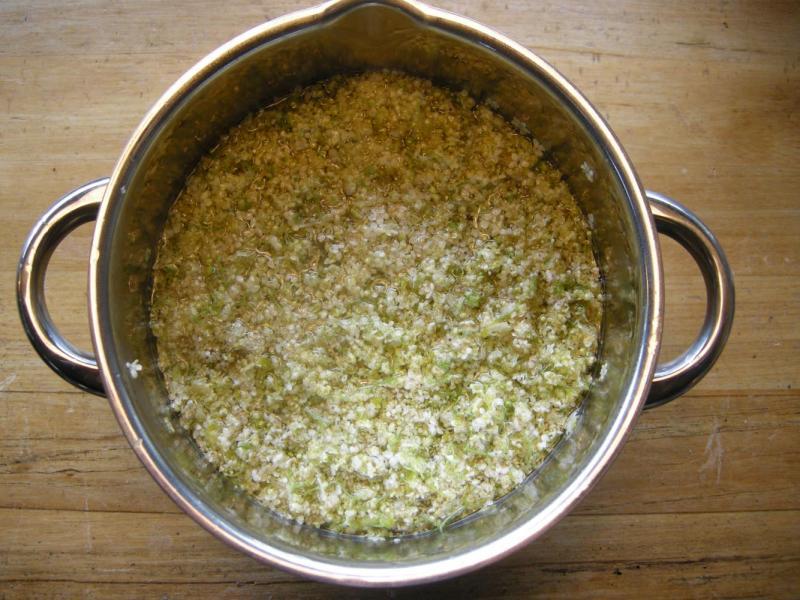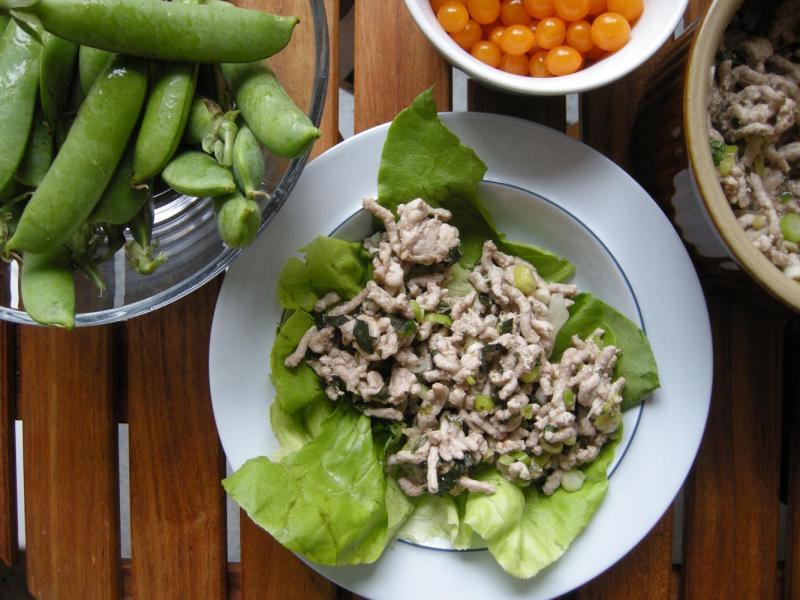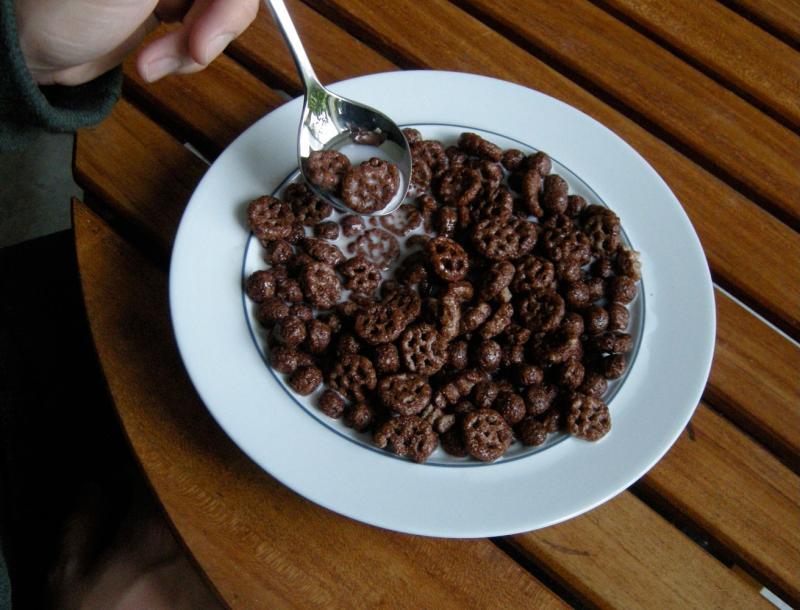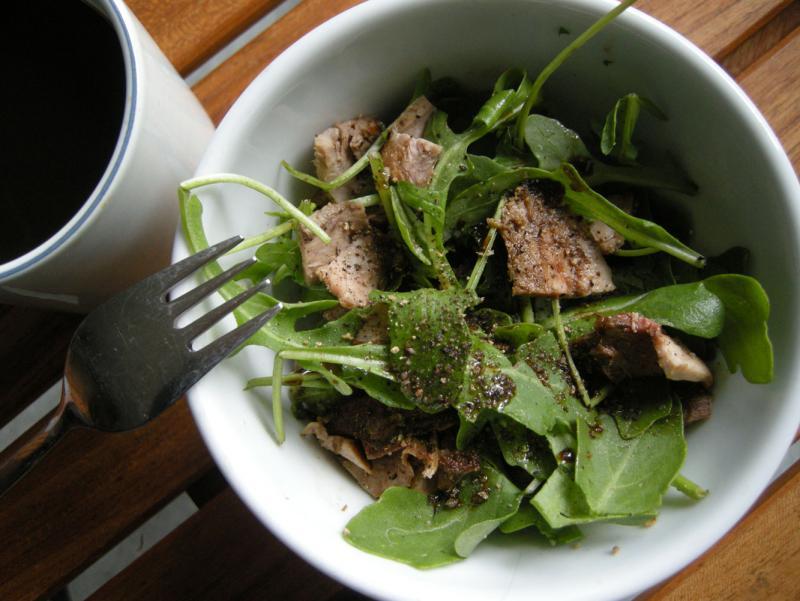-
Posts
7,674 -
Joined
Content Type
Profiles
Forums
Store
Help Articles
Everything posted by Mjx
-

eG Foodblog: Mjx (2012) – Elderflowers, Strawberries, and Game
Mjx replied to a topic in Food Traditions & Culture
That's Swedish (the ö instead of the ø gives that away)! In Danish it's called det kolde bord ('the cold table'), and basically, it's just the stuff that gets made for lunch, although more substantial and varied selections show up at events like julefrokoster (where you can find a fair number of different kinds of herring, but since by the end of the night it may well be being used for body sild, I'm not sure this really gets noticed). Thanks! I actually enjoy the Danish summer and feel a bit guilty about it, because when everyone is looking out the window and wishing it would stop raining, I'm hoping it will just keep on I made a note to give allspice a go in frikadeller, they really do need something to bring out the flavour. And scrubbed, hm? I should have noticed that... -

eG Foodblog: Mjx (2012) – Elderflowers, Strawberries, and Game
Mjx replied to a topic in Food Traditions & Culture
For lunch, we had an adaptation of smørrebrød. Right before we started, my boyfriend remembered that lettuce was kind of required for dyrelægens natmad, se we went out and picked some greens in the garden: This is the selection of ingredients we went with: The sort of wet-looking pink meat in the centre is salt beef, then clockwise from the dark brown stuff, which is beef aspic, you have liver paste, the last two frikadeller, onion and dill for topping, baby greens, mustard, mayonnaise (I know, I know), smoked salt, and salmon. The results: Apart from the dyrelægens natmad (the one with the onion rings and slab of aspic), these are all improvisations, not anything formally recognized (@brucesw, if you're at all familiar with this, you probably noticed that this isn't close to a full-on, authentic smørrebrød), although it's still a good bit more elaborate than what we usually do. Tradition stipulates that shrimp and salmon are eaten on white bread, and most other things are eaten on rye bread, but that went out the window when my boyfriend stood firm on his preference for fresh bread. Also traditionally, you eat smørrebrød with a knife and fork, but there was no way any standard table knife could make a dent in the crust of this bread, so we just picked them up and ate them. DKK 90, actually, so close to USD15 (but that includes tax, and since wait staff are paid a living wage you don't tip, so the price includes everything). -

eG Foodblog: Mjx (2012) – Elderflowers, Strawberries, and Game
Mjx replied to a topic in Food Traditions & Culture
Breakfast today included Guinness Stout ginger cake, which you may notice is a little. . . dark: Okay. The top is burnt black: Even reducing the temperature to compensate for the oven’s tendency heat spikes didn’t help (although it seems to have interfered with the rise a bit ). Fortunately, the thing wasn’t incinerated, and with the thin carbonized layer trimmed away, and if it didn’t look beautiful, it still delivered in terms of flavour (it’s so good with coffee), and the recipe is one I highly recommend. The cake is also a bit paler than usual, because at about 22.45 last night I discovered that I was out of molasses (difficult to find here), so I frantically racked my brains for a substitute, and hit upon a combination of cane syrup, pureed prunes, and cider vinegar. As a substitution, this was passable, but hardly ideal (but hey, I did promise at least one culinary fiasco). -

eG Foodblog: Mjx (2012) – Elderflowers, Strawberries, and Game
Mjx replied to a topic in Food Traditions & Culture
Oh yes, and we were lucky to find these Thanks! I do love eating here. There are several versions of both hot and cold smoked fish, and in the containers of things that are not smoked fish, going left to right, there are shrimp (small, square glass container), behind the shrimp are crab claws, quite large ones (metal bucket), then there are prawns (metal container), a mystery item that no one I've asked today could identify from the picture, but there are lemon slices and what appears to be a tomato based sauce, so I'm guessing that it's some sort of seafood appetizer (foil tart tins in glass container), fish frikadeller (glass container), and some lightly dressed shrimp (glass container to the right of the row of three triangular containers of various condiments, at the back). It's just coarse salt, which has a tendency to roll off the fish, so you have to sort of dab it up from the plate. They offer several choices of sauce, including remoulade and ketchup (I'm not much of a sauce person, and really dislike anything creamy with savoury dishes, so I passed); that one is aïoli, which my boyfriend described as a very good take on it. If you look at the first image, you can see a body of water in the middleground; the water gates regulate the flow of water from the bay to the inlet, and prevent flooding (I think it's just to protect homes, I don't believe there is any pisciculture going on). By the way, if you look closely, you can just make out something else that is very Danish: the row of ten windmills on the right side of the horizon. -

Is it time to lose the name "molecular gastronomy"?
Mjx replied to a topic in Food Traditions & Culture
Who still uses this term?! -

eG Foodblog: Mjx (2012) – Elderflowers, Strawberries, and Game
Mjx replied to a topic in Food Traditions & Culture
I mentioned earlier that dinner was going to be dinner was fish and chips. I should say, fantastic fish and chips with a lovely view, preceded and followed by a drive through a landscape that is almost insanely photogenic and picturesque. There are still plenty of tiny Danish towns that are simply bursting with half-timbered and thatched houses, and interspersed with fields containing small scatterings of attractive livestock knee-deep in clover (or whatever it is they’re consuming). Unfortunately, most of it has no connection to our dinner or food, but I figured a few shots of the area around our destination, Fiskehuset (‘The Fish house’), were justified. Our destination is somewhere in the cluster of houses in the centre of the picture: And this is Fiskehuset, at the marina in Norsminde: When they're open, which is only at certain times, the place is usually fairly crowded, so there's no guarantee of a seat: The fish and chips were as fantastic as ever (the fish is hake); we also got one of the old, non-wobbly tables with an iron base and slate top: Afterwards, we took a walk around the marina, and we noticed some kids crabbing: A few more shots around Fiskehuset: (No recipe for jellyfish, but give me a little time. . .) Danes eat early: by 19.00 there’s hardly a soul in sight: And something to finish with: -

eG Foodblog: Mjx (2012) – Elderflowers, Strawberries, and Game
Mjx replied to a topic in Food Traditions & Culture
Pickled herring is popular. There also used to be a lot of klipfisk (dried fish, cod, I believe) but it's not very popular anymore. Too whiffy for modern tastes, apparently. Thanks! Denmark is one of those places that is really hard to stop photographing -

eG Foodblog: Mjx (2012) – Elderflowers, Strawberries, and Game
Mjx replied to a topic in Food Traditions & Culture
I didn't notice that the oats contributed anything to the flavour, in fact, the frikadeller were quite bland. Next time I make these, I'm adding thyme and a little nutmeg. And maybe replace the 'panade' with chopped mushrooms. Let me kow how your bread comes out Do you do a sample before you make the whole batch? To taste for seasoning, etc. Often, what's perceived as (or what is actually) bland just needs some punching up with salt and pepper...often, more than you think is needed! I didn't sample, but I did err on the side of using too little salt, since my boyfriend's parents asked to be dealt in on this, and they like things less salty than I do. There's also a weird thing about salt in Denmark: it takes a while for it to dissolve fully. It might be the hardness of the water, although I cannot imagine why that would affect it. But the salt seems to take quite a while to dissolve, and it's easy to over-salt (it happened a lot when I first began cooking here). When I had one of the cold frikadeller this morning, the saltiness was fine. But it was still pretty bland; or perhaps it would be better to describe them as not up to their full flavour potential. -

eG Foodblog: Mjx (2012) – Elderflowers, Strawberries, and Game
Mjx replied to a topic in Food Traditions & Culture
Today, breakfast was skyr with blueberries, vanilla bean powder, and chestnut honey: Today’s schedule includes making bread (all sifted spelt, this time), some shopping and planning for tomorrow (venison and hokkaido-chestnut soup for dinner), and going out for fish and chips this evening. You’ve probably noticed that there hasn’t been any dining out, so far. This is partly because something casual like grabbing a sandwich is complicated by my having to decide whether I’ll enjoy said sandwich enough to deal with the consequences (which is a bore), and partly because more upscale dining is often disappointing/not great value for what you pay. Although there are several restaurants in Århus that deliver good to exceptional meals (e.g. Malling & Schmidt, Substans, Mefisto), they are much more expensive than at least equivalent dining experiences in Italy, and we seldom eat out here; instead, we tend to go all out when we travel. On the other hand, my passion for fish and chips is of a ‘screw the consequences’ intensity, so this evening we’re heading out to the only place we’ve found (so far) that offers an excellent iteration of fish and chips. I’m puzzled by the difficulty of finding not-dreadful versions of fish and chips in the area (the fried fish is where it all seems to break down entirely), particularly since we’re on a coast. I sometimes get the impression that, outside of Denmark, people have the idea that Noma and other restaurants with a similar aesthetic/approach reflect Danish food trends in general, but I haven’t seen evidence of any significant trickle-down effect, and the traditional dishes, prepared the traditional way, remain solid favourites. Although by no means always the case, there is a tendency for ordinary Danish food to be bland and overcooked, although there’s usually plenty of it. Even sauces (which I think of as intended to add flavour) tend to be based on flour and milk, possibly with kulør (caramel brown) added for colour (the last line of text on the web page [Klassikeren til den gode mad!] says ‘The classic for good food!’). Still, there is the (for me) rather elusive smørrebrød. By ‘elusive’ I mean I haven’t come across it that often, although I’ve been visiting Denmark since 2000. This morning, I pumped my boyfriend for information on this, and didn’t get much: Yes, there are plenty of shops selling smørrebrød, mostly butcher shops (where it’s presumably made to order, since I haven’t noticed it in the display cases). He further contends that it’s mostly eaten by people over fifty. What?! I point out that he brings a (very) modified version of smørrebrød to work pretty much every day. He admits this, and regards the topic as done. I try again: the traditional ones have names, right? He mentions dyrlægens natmad (‘the veterinarian’s night food/meal’ – rye bread, liver paste, slice of salt beef, beef aspic), which I know; the only other one I know by name is stjerneskud (‘meteor’ – white bread, plaice filet, shrimp, lemon). ‘Anything else?’ ‘Mmph’. The traditional, full-scale smørrebrød may be a victim of Denmark’s having apparently jettisoned formality in a big way over the past couple of decades. The first time I visited Denmark (a one-night layover with my parents, when I was about 7), my father was outraged at being excluded from the regular dining room because he wasn’t wearing a tie; today, there probably are no more than a few (if that) restaurants that require men to wear ties. Denmark is almost unrelentingly casual, and the time and structure of traditional smørrebrød probably seems to fussy for most occasions. So, when I do a really modified version of smørrebrød tomorrow, my feelings of guilt will not be overwhelming -

eG Foodblog: Mjx (2012) – Elderflowers, Strawberries, and Game
Mjx replied to a topic in Food Traditions & Culture
I didn't notice that the oats contributed anything to the flavour, in fact, the frikadeller were quite bland. Next time I make these, I'm adding thyme and a little nutmeg. And maybe replace the 'panade' with chopped mushrooms. Let me know how your bread comes out -

eG Foodblog: Mjx (2012) – Elderflowers, Strawberries, and Game
Mjx replied to a topic in Food Traditions & Culture
Sure. It's one of the offerings in a 'traditional herbs' line offered by urteteket (these inlcude dill, and several others). ETA My mistake: ramsløg (what I was talking about) are ramsons (Allium ursinum), not ramps, although they're relatively closely related. Sorry about that! -

eG Foodblog: Mjx (2012) – Elderflowers, Strawberries, and Game
Mjx replied to a topic in Food Traditions & Culture
Here are the frikadeller: I wanted to stay at least reasonably faithful to traditional recipes, but I wanted to experiment a bit, to see whether I could get around the rubbery/dry consistency that shows up fairly often. Often, they’re also really bland. I began by pulling out On Food & Cooking, Modernist Cuisine (v. 3), and various issues of Cook’s Illustrated (why not turn any meal into a hefty research project?), to get an idea of how I could make the frikadeller come out substantial and tasty, rather than bouncy and dry. Half an hour later, I had some ideas, and got things going. I used the Ny Nordisk recipe I mentioned a bit earlier today, to establish a sort of baseline for the relative amounts of meat, dry ingredients, moist filler, and liquids. Since I had 500 g of veal/pork mixture, I upped the weight of the other ingredients accordingly; I also replaced the potato (grated and added raw in the Ny Nordisk recipe) with an equal weight of a sort of panade of rolled oats and broth (I’m not enthusiastic about dairy in savoury dishes), and, memories of childhood nut loaf in mind, replaced the seeds/coarse bread with more rolled oats (there is a long tradition of using oats in frikadeller, mostly when meat was scarce). I swapped in broth for the milk, and dissolved 1 g of gelatine in it (this was inspired by the research phase, since gelatine would both add cohesiveness and moisture), and mixed the meat vigorously with a hand mixer (also to improve cohesion). I added fresh lovage and dried ramps to give a bit more flavour. I added the rolled oats (the ones not in the 'panade') last, to make sure I didn't make the mixture too dry; they were definitely needed, though, and adding them turned the mixure from a soupy mess to a workable texture: I let the mixture sit and set up for three hours before frying these. Plan A involved rice, but my boyfriend’s parents prefer potatoes (they asked to be included in this endeavour), so I roasted some small new potatoes (boiled is traditional, but I like roasted so much better). The inside looked like this: The frikadeller weren't bad, crunchy and nicely browned on the outside and moist on the inside, but the texture was a tiny bit pasty (but not rubbery!); my boyfriend said that usually they have a coarser texture (but ate seven anyway). Next time, I'll pass on using the mixer on the meat, since I think the gelatine was enough to give it the necessary cohesiveness. -

eG Foodblog: Mjx (2012) – Elderflowers, Strawberries, and Game
Mjx replied to a topic in Food Traditions & Culture
I think that is what you call crackling; it's the skin, when the fat renders from beneath it, and it turns hard-crunchy, you need good teeth to chew on it (I have some large holes in my meat knowledge, because I was raised vegetarian, so I didn't hear terms like 'crackling' when I was growing up). And no, there's 25% sales tax on everything -

eG Foodblog: Mjx (2012) – Elderflowers, Strawberries, and Game
Mjx replied to a topic in Food Traditions & Culture
Thanks! I've seen such shops here and there, but not very often, and I can only think of one (maybe) around here. The chicken was DKK44/1200 g (given the current exchange rate, that's USD7.21/42 oz.); the ground pork and veal mix I got for today's frikadeller was DKK40/500 g (USD6.55/17.6 oz); a fifth of that is sales tax, by the way. -

eG Foodblog: Mjx (2012) – Elderflowers, Strawberries, and Game
Mjx replied to a topic in Food Traditions & Culture
Anna, for this evening, I'm going to make frikadeller! These are very traditional for summer, and straightforward to make. I think. I've never made them before, since I've always made polpette, the Italian version (from The Splendid Table). This should be interesting. I wanted to get a bit of background on the subject, and my boyfriend's mother generously delved into her substantial library of cookbooks. I settled on three popular cookbooks: Alfas Kogebog [‘Alfa’s Cookbook’] 1925, vol 1, pp 121-122; (‘Alfa’ was a brand of margarine); Lærebog i Huslig økonomi [‘Textbook for Home Economy’, my boyfriend’s mother’s home economics schoolbook from the 4th to 9th classes, and given as a gif to be used after graduation], 1961, p 154; Claus Meyer et al.’s Ny Nordisk Hverdagsmad [‘New Nordic Everyday Food’], 2011, p 101. The ingredient lists give some idea of how frikadeller have evolved over the past 87 years: 1925 Alfas Kogebog (The book notes that 500 g of prepared meat mixture serves 4–6) 1 kg veal/pork (topside/round [inderlår], brisket [bov], or neck/chuck [mellemskært]) 250 g kidney fat (probably suet) or fresh pork fat 250 g flour 4–6 eggs Salt, white pepper, grated onion OR 1 kg beef (topside/round) 175 g fresh pork fat 250 g flour 3–4 eggs Salt, white pepper, grated onion 1961 Lærebog i Huslig økonomi 300 g beef, veal, or pork 40 g onion 4 tablespoons flour 1 teaspoon pepper 1 dl milk 30–40 g fat 2–3 dl water Kulør (caramel colour) and salt for the sauce 2011 Ny Nordisk Hverdagsmad 400 g ground veal and pork belly Salt and pepper 1 onion 120 g potato 120 g multi-grain/coarse bread 2 eggs 2 dl 1.5% milk 4 teaspoons flour 2 teaspoons mustard 20 g butter, for frying 2 tablespoons cold pressed rapeseed oil, for frying The recipes have changed very little over time, and they all assume you’ll be grinding your own meat: the 1925 recipe calls for passing the meat through the grinder 9 times, by 1962 this is down to just twice, and today, a few seconds in food processor are called for. I'm not going to be grinding my own; there is a very elderly meat grinder laying about somewhere (or parts, at least), and no food processor. And I want to do a little research; with Harold McGee, Modernist Cuisine, and Cook's Illustrated at my disposal, there must be some tips I can come up with, to make these as good as possible. I'm also thinking 'lovage'; the Ny Nordisk recipe includes it in the dressing for the frikadeller, why not put them in the frikadeller themselves? Yesterday, I passed a shop that sells traditional Danish ready-to-eat dishes, but I decided to save the image for today: You can see three sorts of frikadeller (no idea what, though), flæskesteg (roast pork, the long thigs with the ridged tops), and various summer salads. -

eG Foodblog: Mjx (2012) – Elderflowers, Strawberries, and Game
Mjx replied to a topic in Food Traditions & Culture
The hokkaido shows up, seven images down! I wrapped up my shopping at an Asian shop (Thai, Vietnamese, Chinese, Japanese, a little Indian and Korean), where I picked up some palm sugar and toasted rice flour. They have a much broader selection of condiments, herbs, and spices than pretty much any other shop around, and some interesting produce and snacks. I do realize, though, that compared to similar shops (e.g. in the US and Australia), this one is tiny. When I got back to my boyfriend’s parents’ place, his mother had just completed a traditional kransekage for a friend’s sixtieth birthday party: In Denmark, ‘round number’ birthdays tend to involve major parties, the last one I went to lasted pretty nearly 24 hours. I'll talk some more about Danish food tomorrow; I don't make much, since it tends to involve a lot of potatoes and flour, and those don't work out so well for me (kransekage is actually one of the things I can eat with no problems, since it involves stacked rings of marzipan, and not much else). And suddenly, it was 18.00, and I needed to get dinner started. My boyfriend helped out by bringing me a box of chocolates, and convincing me to sit down for a small snack and a drink. I brought up the hokkaido (hokaido?) to keep us company, and so I could include it in one of the images (the thing that looks like a stunted, deformed pumpkin). Dinner: roast chicken with rice, bell pepper, and radishes, and strawberries with balsamic vinegar and black pepper. And more chocolates, whiskey, and port. Nope. Pretty common in China, too I wondered about that, I mean whether this was done anyplace else. Ah, but it's a particularly good winter squash! Really nice texture. That's one big bacterial culture! Is it refrigerated? Refrigerated? You must be joking! I'm continuously teased about my finicking hygiene habits (e.g. washing my hands before every meal). No idea why, but Danes just don't go for potatoes in their jackets. They usually go with peeled and boiled, and when those lovely little new potatoes are involved, it practically breaks my heart. Thanks! And my boyfriend says Thanks, too, and is incredibly pleased someone noticed the greenhouse, since he spent ages bulding it. It's his own design, the frame is oak, and it's finished in with boat varnish (because it's so damp here). Mostly, I use it in place of potato, because potatoes are a bit of a disaster for me. the texture is very similar, and the flavour is pretty neutral. This one is going to be part of a soup and/or a puree. -

eG Foodblog: Mjx (2012) – Elderflowers, Strawberries, and Game
Mjx replied to a topic in Food Traditions & Culture
On Wednesdays and Saturdays there is an outdoor market at Ingerslevs Boulevard, and since I needed a hokkaido, I figured I’d head out and see whether I could find one. On my way, I passed this shop, which sells bread trugs that I seriously covet: Since today is both rainy and in July (possibly the most popular holiday month in Denmark), the market was a bit sparse, both in terms of vendors and shoppers: A lot of the vendors are simply retailers of many of the things you find in the shops (this stand sells only organic produce): He had hokkaidos, which I haven’t seen in the supermarkets or health food stores at this time (middle row, far right): Some of the vendors are very specialized, like the man who sells honey and a few other bee-derived products: I’d hoped the salt man would be there, but he’s probably on holiday. I’m a big fan of his smoked salt, which I initially thought silly and gimmicky, but now put in everything (including hot chocolate). Some are here to sell their own produce: Herbs in pots: The cheese truck: Fish, fresh and smoked (koldrøget is 'cold smoked'): And finally, the potato tank, to keep the peeled potatoes from turning brown: After this, I went to the Asian shop, so... a few more images to follow. -

eG Foodblog: Mjx (2012) – Elderflowers, Strawberries, and Game
Mjx replied to a topic in Food Traditions & Culture
On Wednesdays and Saturdays there is an outdoor market at Ingerslevs Boulevard, and since I needed a hokkaido, I figured I’d head out and see whether I could find one. On my way, I passed this shop, which sells bread baskets that I seriously covet: Since today is both rainy and in July (possibly the most popular holiday month in Denmark), the market was a bit sparse, both in terms of vendors and shoppers: A lot of the vendors are simply retailers of many of the things you find in the shops (this stand sells only organic produce): [iMAGE] He had hokkaidos, which I haven’t seen in the supermarkets or health food stores at this time (middle row, far right): Some of the vendors are very specialized, like the man who sells honey and a few other bee-derived products: I’d hoped the salt man would be there, but he’s probably on holiday. I’m a big fan of his smoked salt, which I initially thought silly and gimmicky, but now put in everything (including hot chocolate). Some are here to sell their own produce: Herbs in pots: The cheese truck: Fish, fresh and smoked (koldrøget is 'cold smoked'): [iMAGE] [iMAGE] And finally, the potato tank, to keep the peeled potatoes from turning brown: [iMAGE] [iMAGE] After this, I went to the Asian shop, so a few more images to follow. -

eG Foodblog: Mjx (2012) – Elderflowers, Strawberries, and Game
Mjx replied to a topic in Food Traditions & Culture
Kerry, I'm impressed that you recognized it as a Rösle from the small part of it that showed in the image. The mill is brilliant, I love it! I use it most for tomatoes, but hokkaido, potatoes, and quinces also pass through it pretty often (my boyfriend's mother borrows it, too). -

eG Foodblog: Mjx (2012) – Elderflowers, Strawberries, and Game
Mjx replied to a topic in Food Traditions & Culture
I think Mjx is here per the OP: One of the owners of Cafe Katja, here on the lower east side of NYC, is from Austria, where his family has an elderberry farm. There's often an item or two on the menu containing them, usually a cocktail, sometimes a food course - always delicious. I'm pretty sure I've eaten there, and I'm racking my brains to remember what I ate. I'm pretty sure I missed the elderflower options completely, though. Are these all from the flowers, or the berries, too? -

eG Foodblog: Mjx (2012) – Elderflowers, Strawberries, and Game
Mjx replied to a topic in Food Traditions & Culture
This morning is a coffee and a sprint out the door to do some shopping, so, pictures later. -

eG Foodblog: Mjx (2012) – Elderflowers, Strawberries, and Game
Mjx replied to a topic in Food Traditions & Culture
Denmark isn't very focused on food culture, which makes it difficult to find anyone who knows much about anything more then the currentlty widely available dishes. Germany and Denmark seem to share certain things (prevalence of sausage/pork, potatoes), but most of the Germans I know have complained loudly about Danish food. I don't tolerate spelt. But I don't have celiac disease, either; I don't know what the problem is, but it seems to be a generalized inability to handle a lot of starches. However, spelt is delicious (it's a form of wheat, and tastes like it, only more so), and handles like wheat (it's fairly high-protein, about 11 or 12%, according to the bags I buy) My recollection is that elderberries are mostly seed, and not that much in the flavour department, but whatever the reason, no one seems to worry about it much (quite few elderberries do show up, since the bushes are often really tall, and the topmost flowers are pretty much always left). I was wondering whether anyone was going to bring that up! -

eG Foodblog: Mjx (2012) – Elderflowers, Strawberries, and Game
Mjx replied to a topic in Food Traditions & Culture
I went down to the water, where there are quite a few elderflower bushes growing, to see whether there were any elderflowers left. It's been a bit overcast today. I needed 40 to 50 flower-heads, or, according to the one recipe that gave weights for everything, half a kilo. Eventually, found some bushes that still had flowers that were reachable, if I didn’t mind pawing through nettles and thistles. I’d dressed accordingly, and forged ahead. I foraged further, and eventually managed to get 50 flower-heads, although some were a bit small. Fortunately for me, when I scrambled out of the shrubbery and onto the main road, my hair full of twigs, the various passers-by didn’t give me a second look; the bag of flowers I was clutching told the entire story. The next job was to pick all the florets off the main stems, since the stems supposedly make the concentrate bitter. My haul weighed 320 g, and took about an hour to pick through: I really love the way elderflowers look, I find them incredibly frothy and festive, the way excellent champagne would look if it was a flower. I used 2 L water, 500 g sugar (half the traditionally called-for amount for this amount of water and flower-heads), the zest and juice of 3 limes (I find their flavour more interesting than lemons’), about a tablespoon of citric acid (the scale died on me while I was weighing it), and a pinch of salt. I boiled the water, dissolved the sugar and salt in it, then added the flowers, and the lime juice and zest: It’s supposed to steep for 3 to 4 days, but I can’t find any explanation of why so long; the flowers go into nearly-boiling water, and they’re both fresh and very small (no more than 0.5 cm across, and many are smaller), so a long steep seems unnecessary. I’ve decided to taste it tomorrow morning, and if I like where it is, I’m going to filter, regardless of precedent. At this point, I realized that I needed to get going with dinner, and since there wasn’t much time, I went with larb: -

eG Foodblog: Mjx (2012) – Elderflowers, Strawberries, and Game
Mjx replied to a topic in Food Traditions & Culture
Thanks! And I know what you mean: I watch people eating solid breakfasts at the crack of dawn, and cannot figure it out. Even in Europe -

eG Foodblog: Mjx (2012) – Elderflowers, Strawberries, and Game
Mjx replied to a topic in Food Traditions & Culture
Today’s plan was to collect elderflowers and make elderflower drink concentrate, one of the very traditional Danish things I like most. I noticed some great shrubs a couple of weeks back, and figured this would be the perfect week to do it. However, a friend has just informed me that I’m kind of late to the party, and most of the elderflowers are finished, and he did his... a couple of weeks back. Erm. Well, I’m going to take a look, anyway. Right after breakfast. Two takes on breakfast: My boyfriend's preferred chocolate/sugar bombs: and cold pheasant and rucola with balsamic vinegar: Part of the reason I usually skip breakfast, or have something that is not traditionally regarded as breakfast, is that I handle most starches fairly poorly, so many of the conventional Western breakfast choices don’t make for the greatest start to my day. Fortunately, the alternatives are fairly attractive (and they can out-do my boyfriend's breakfast in the 'You can't be serious factor', by several orders of magnitude, e.g. a Ritter Sport).


